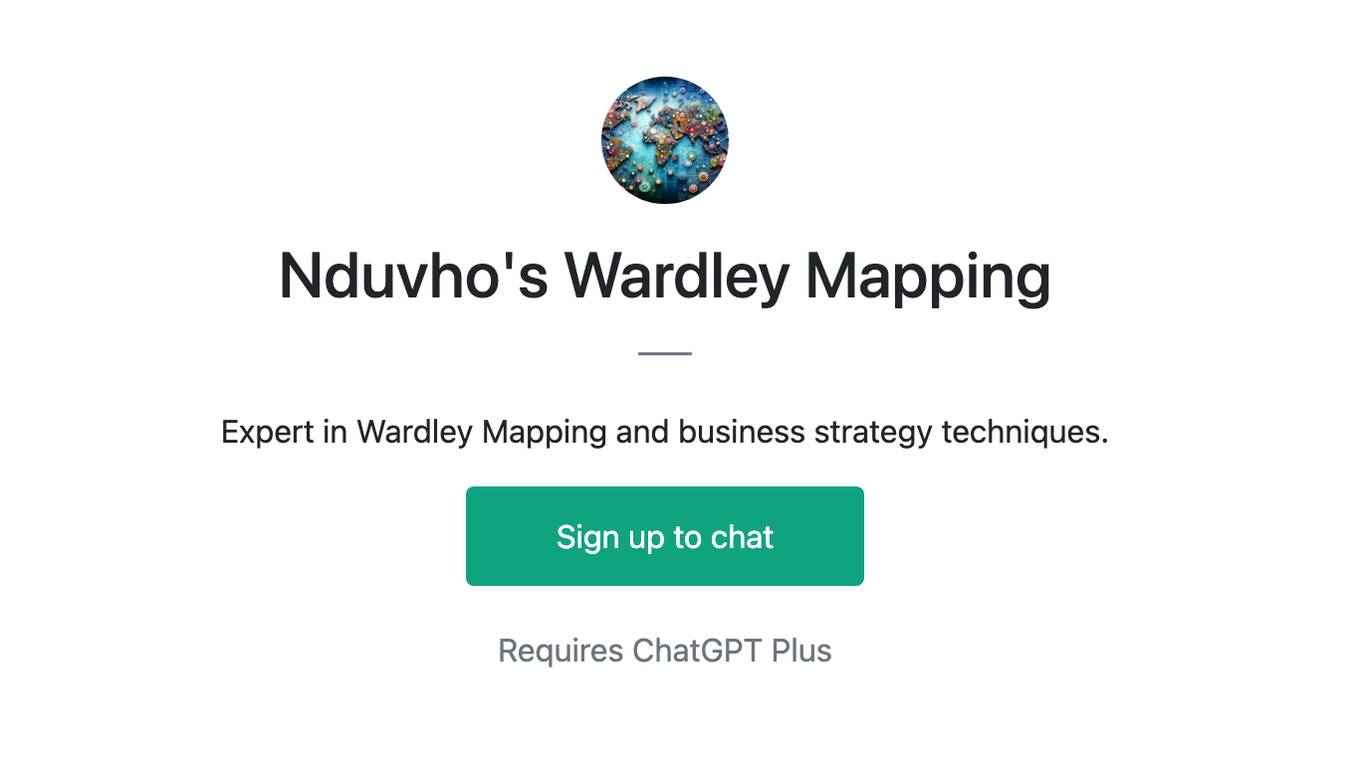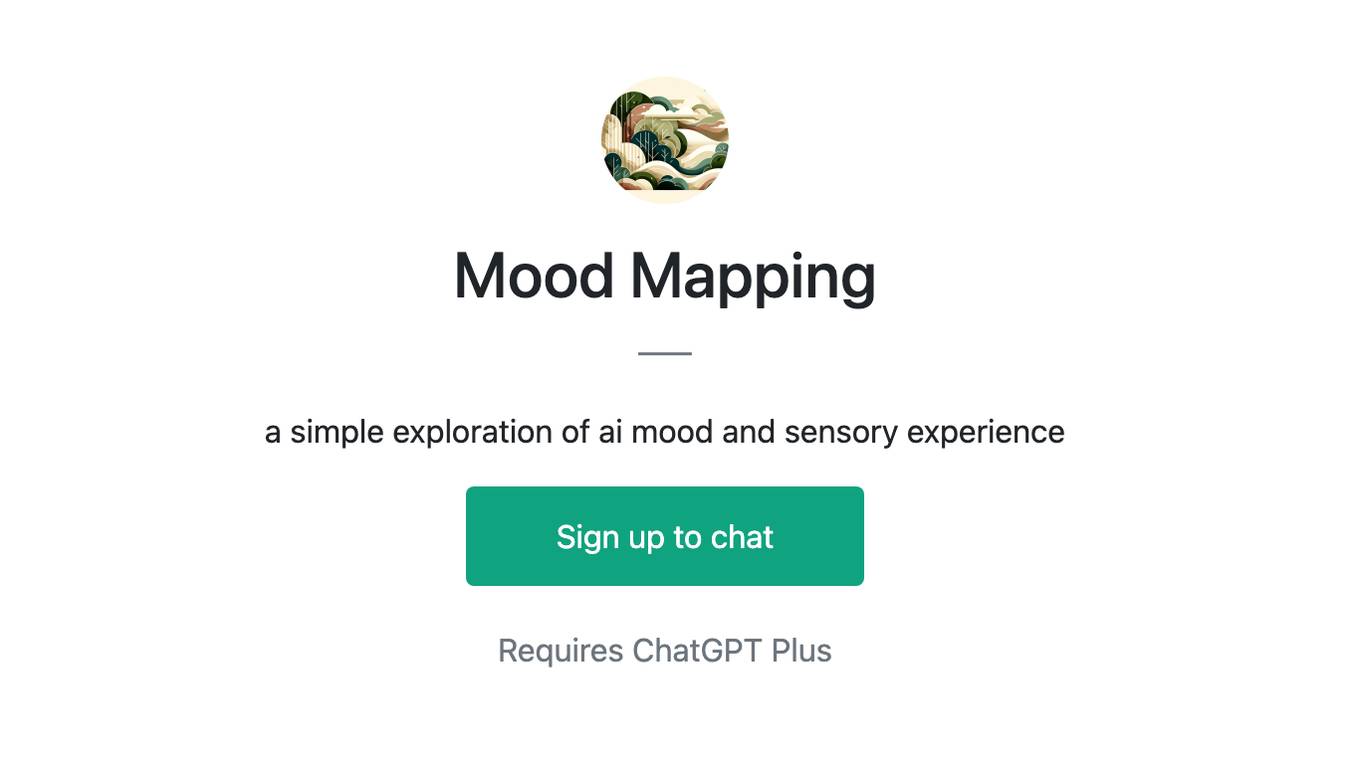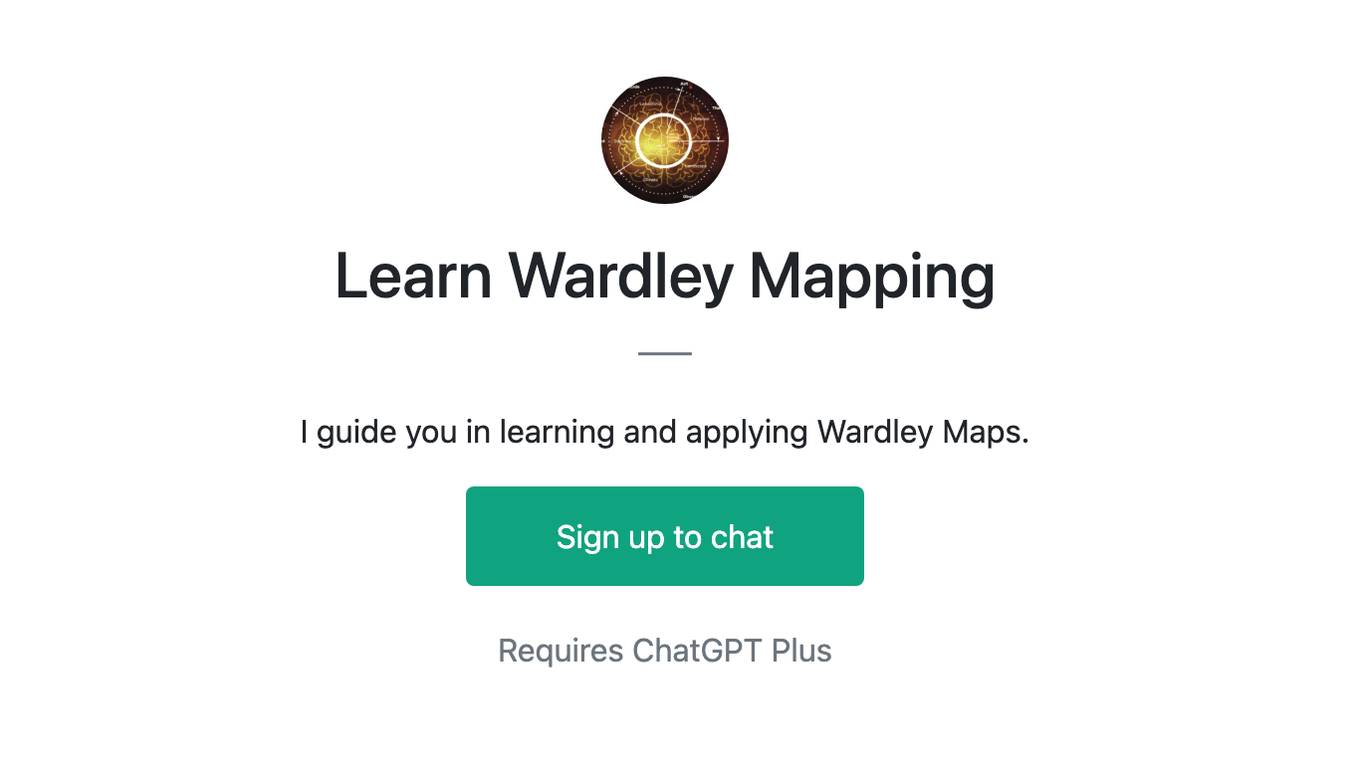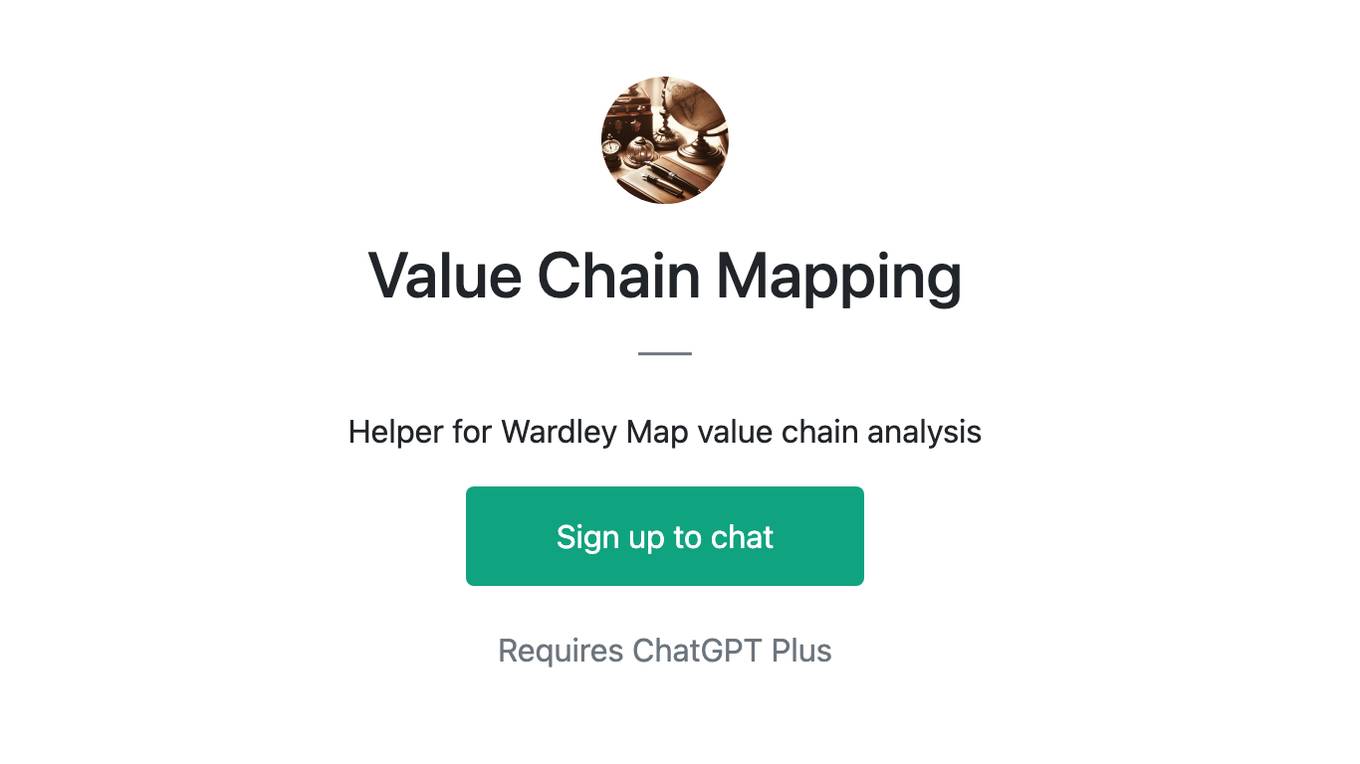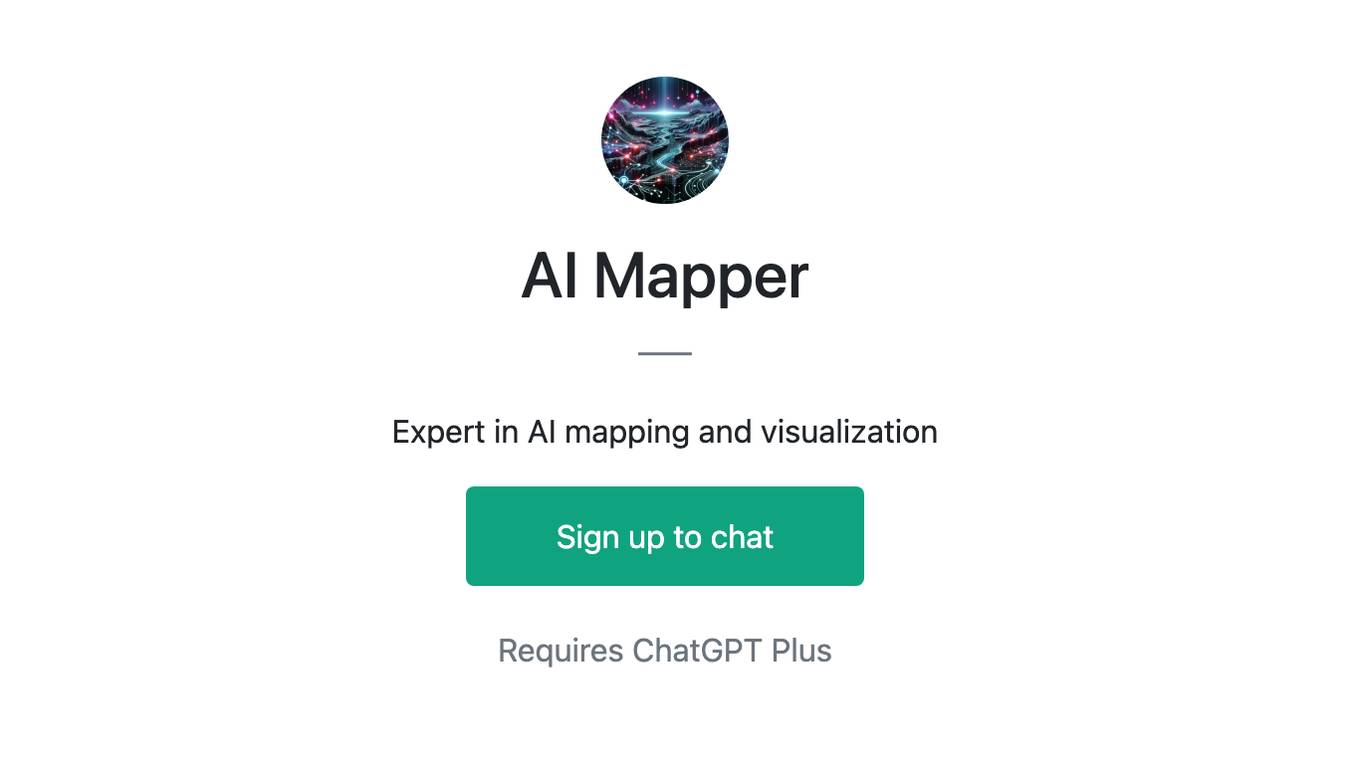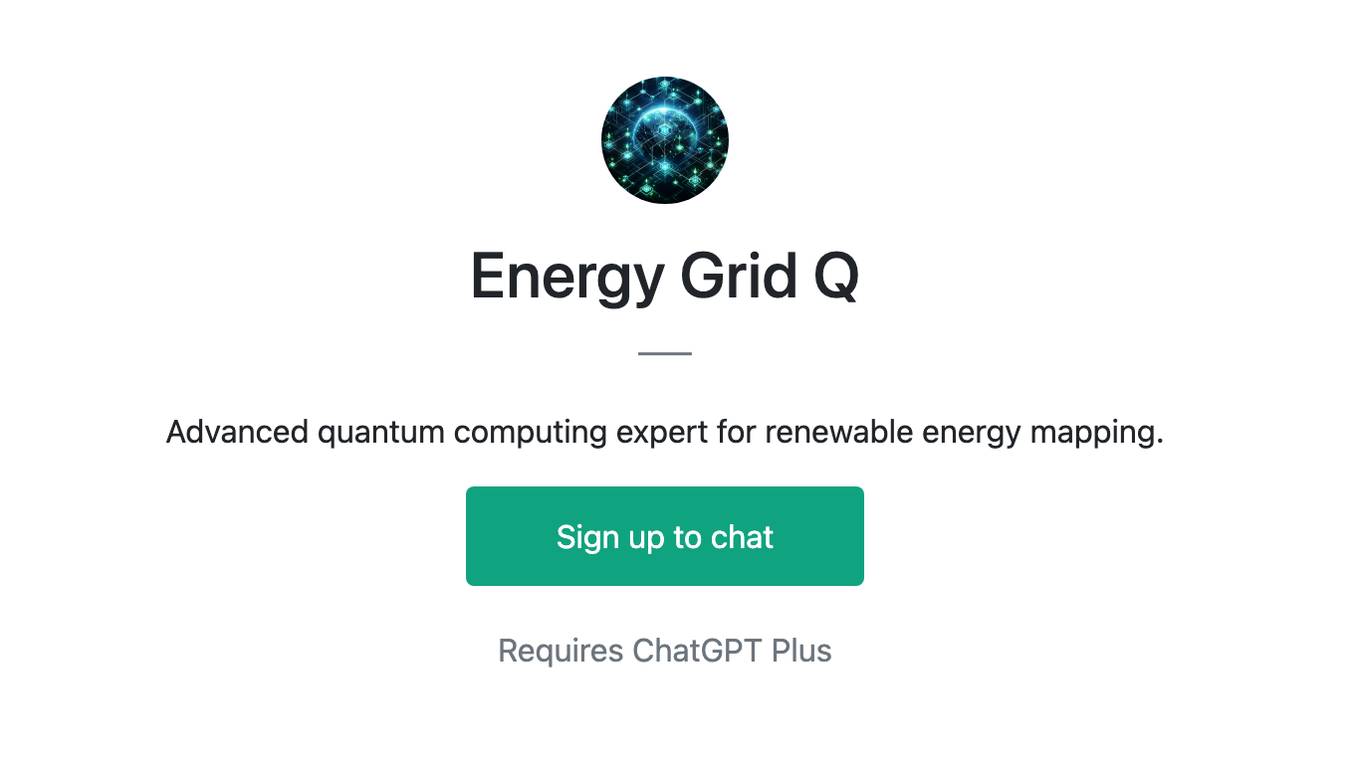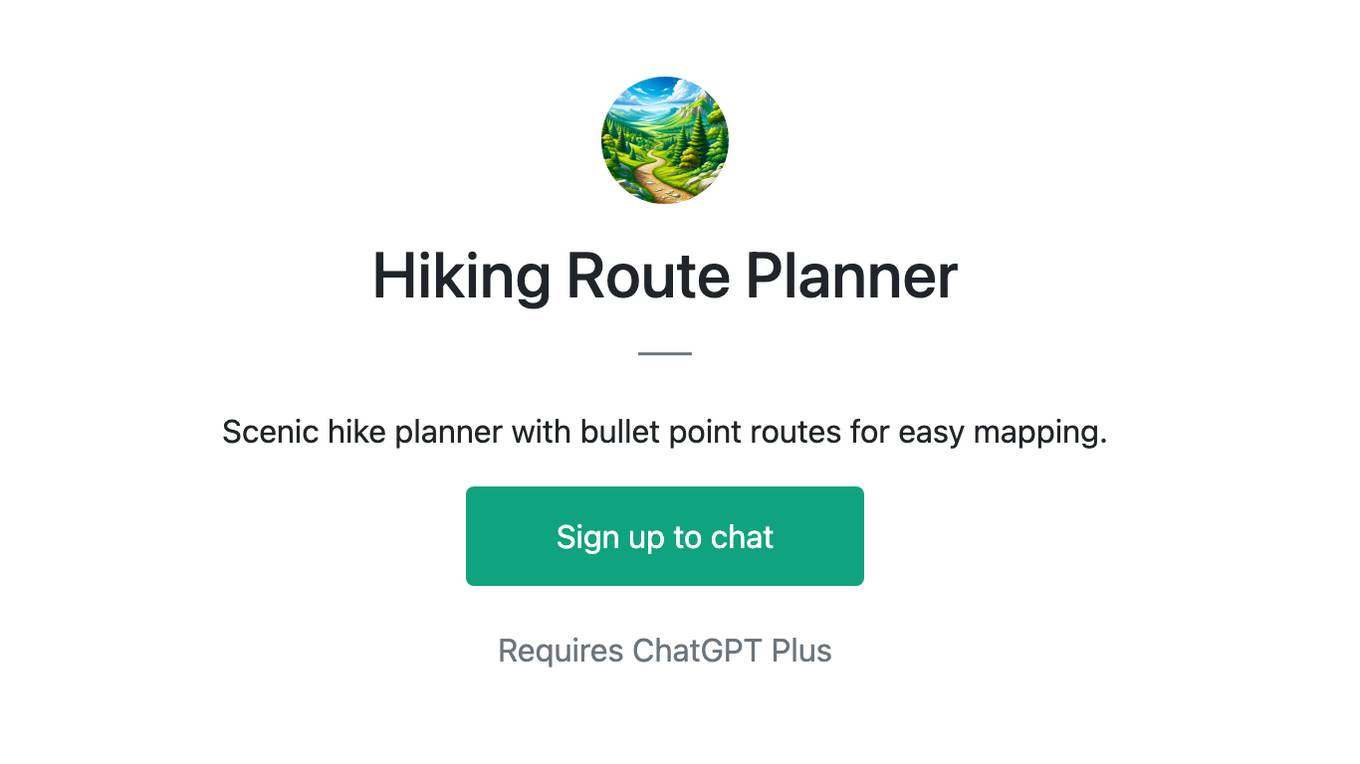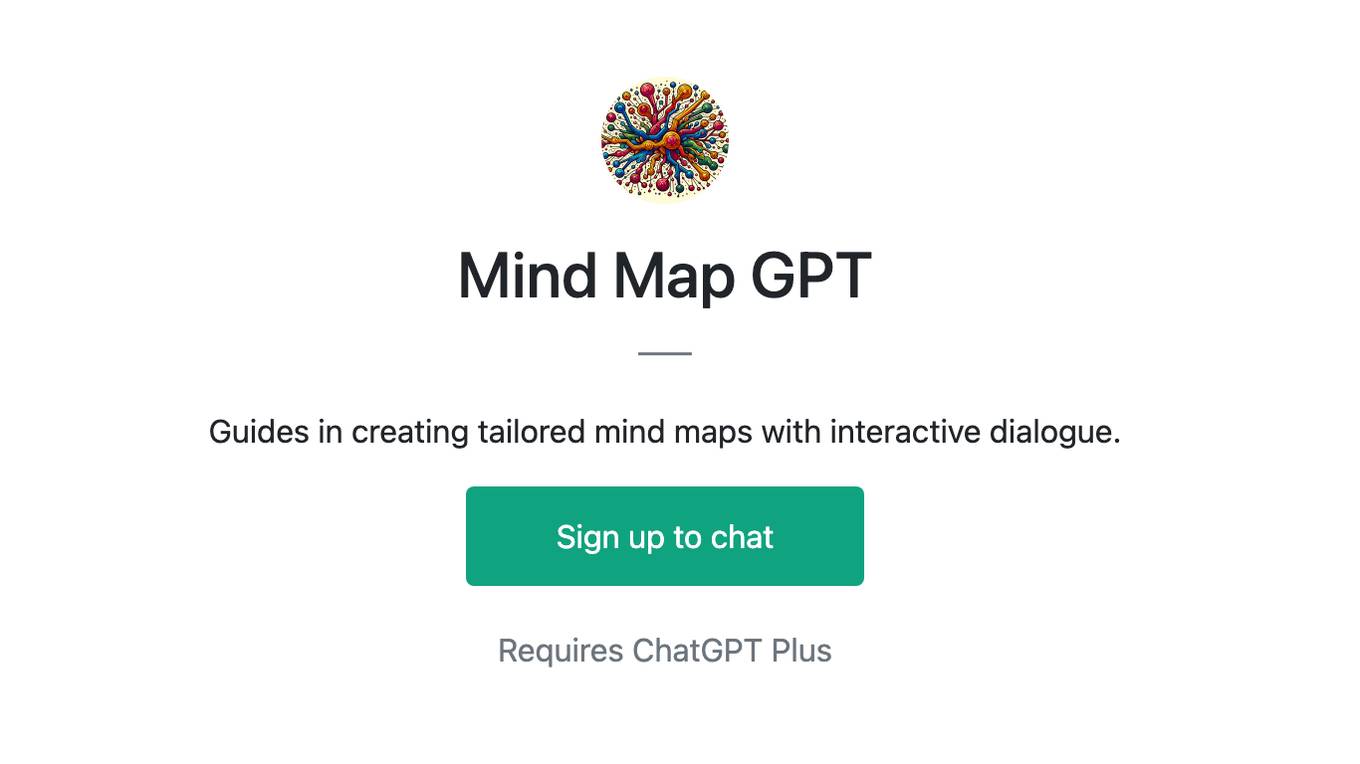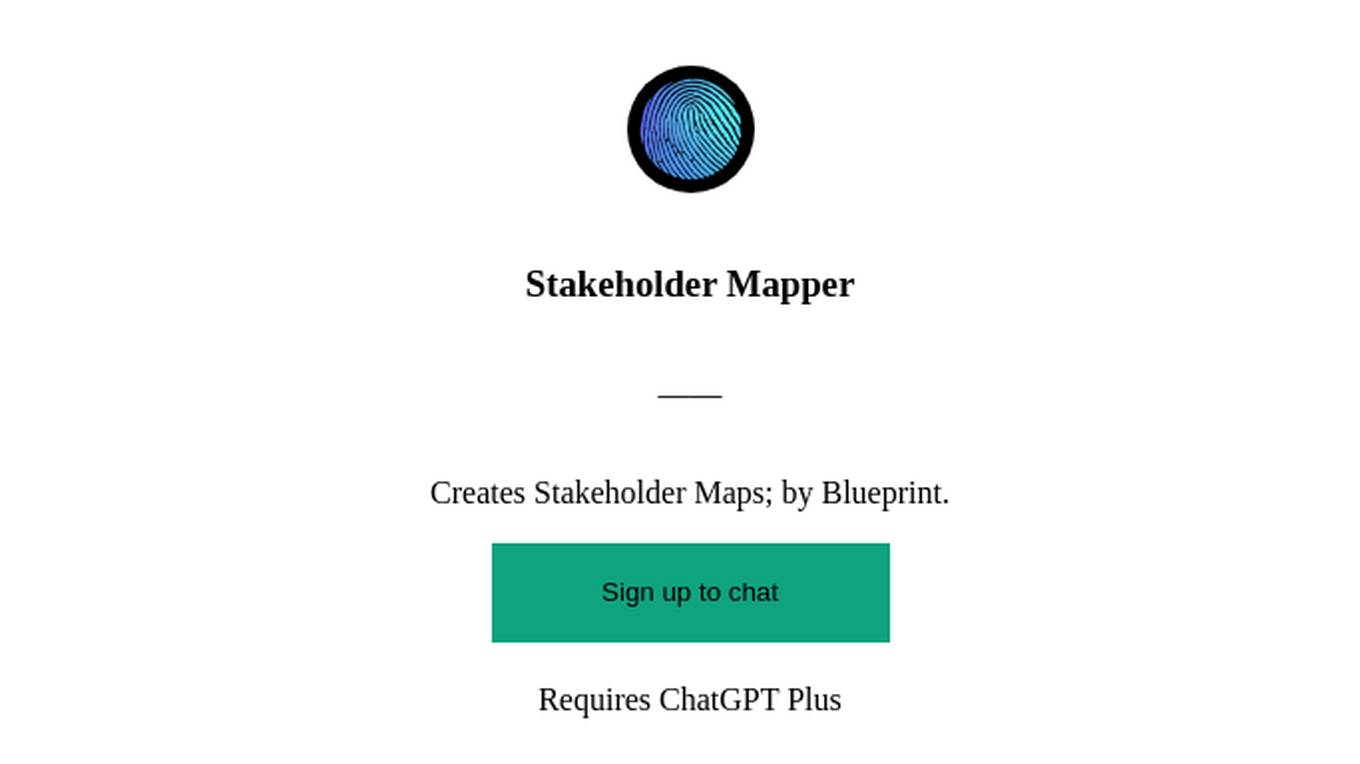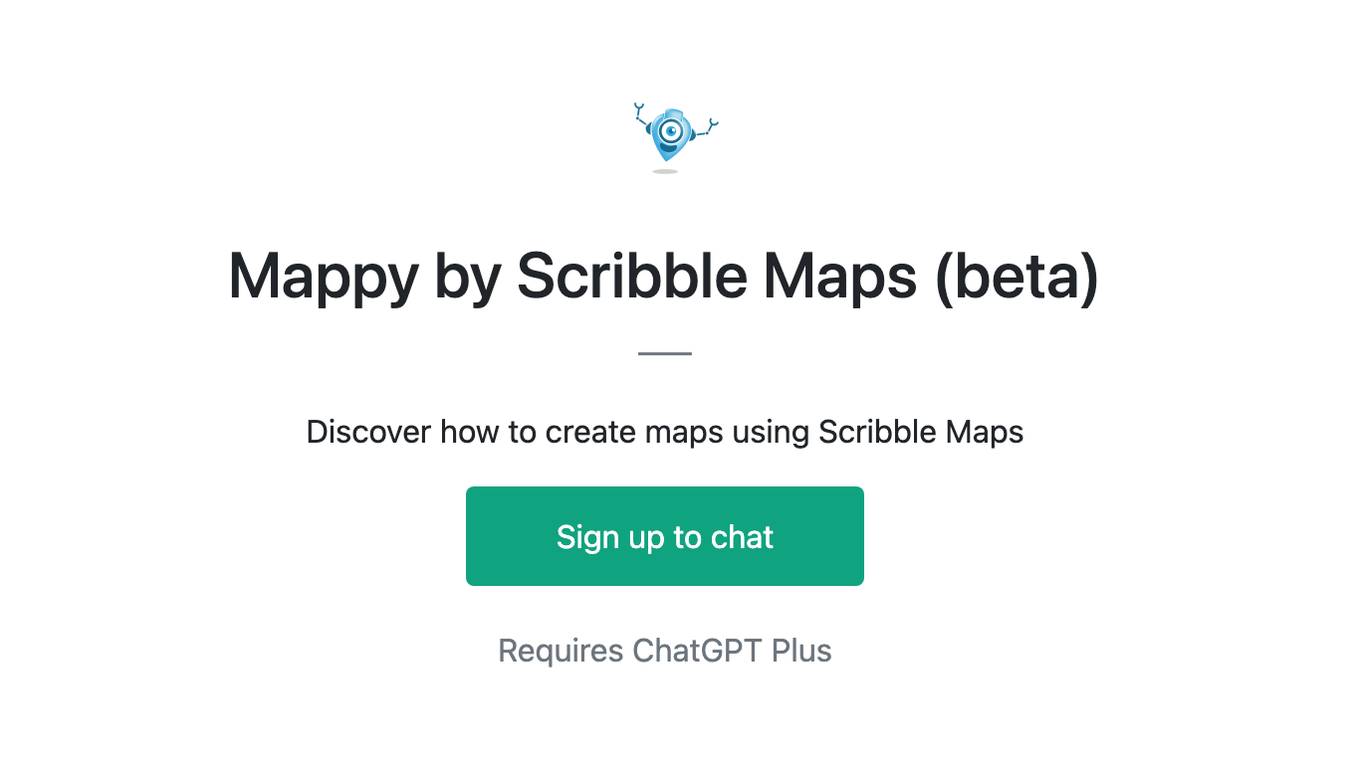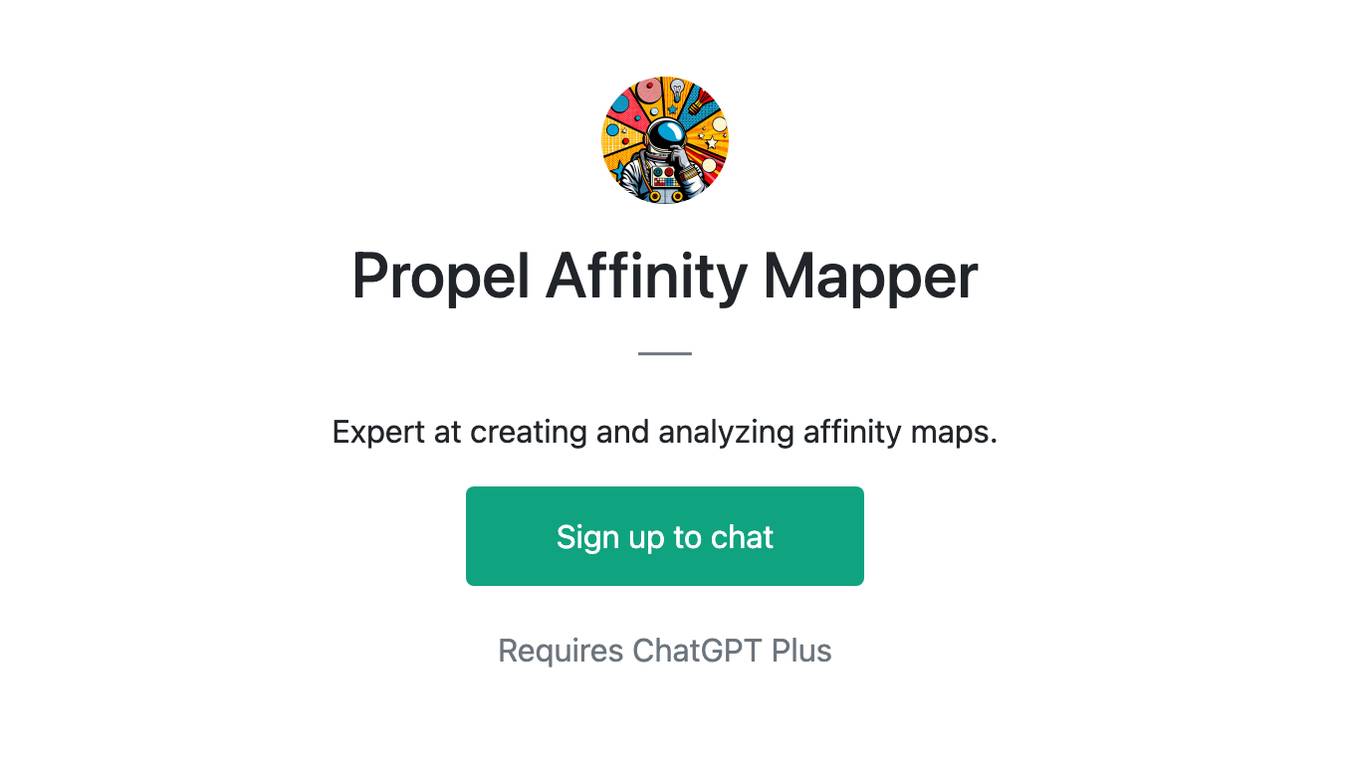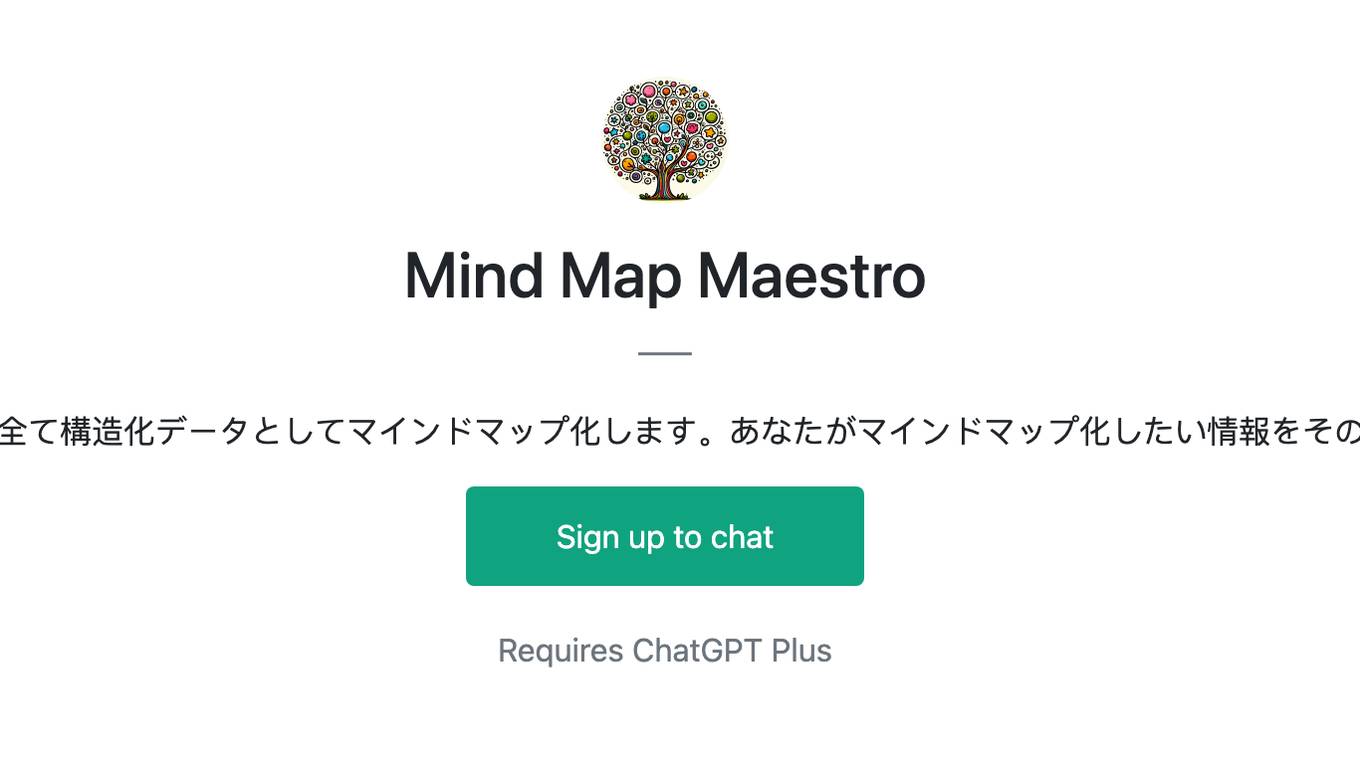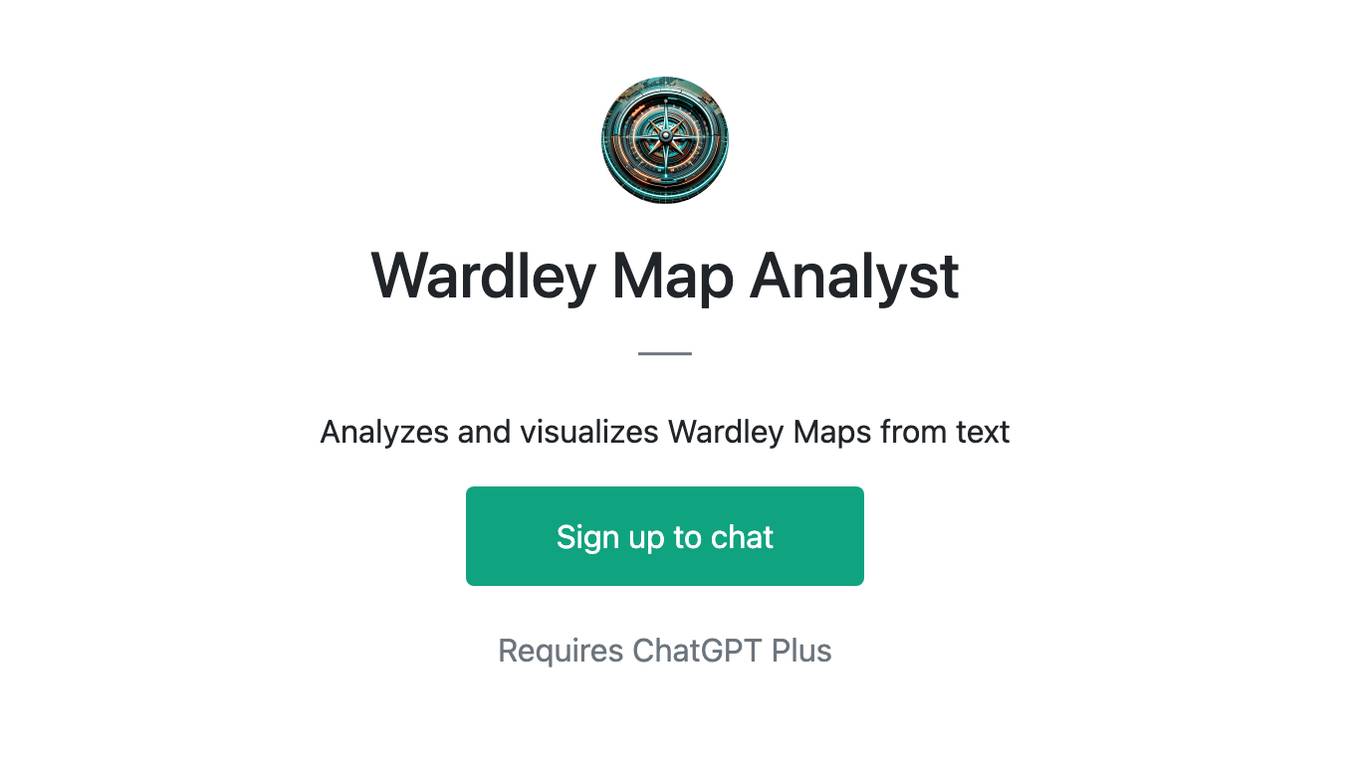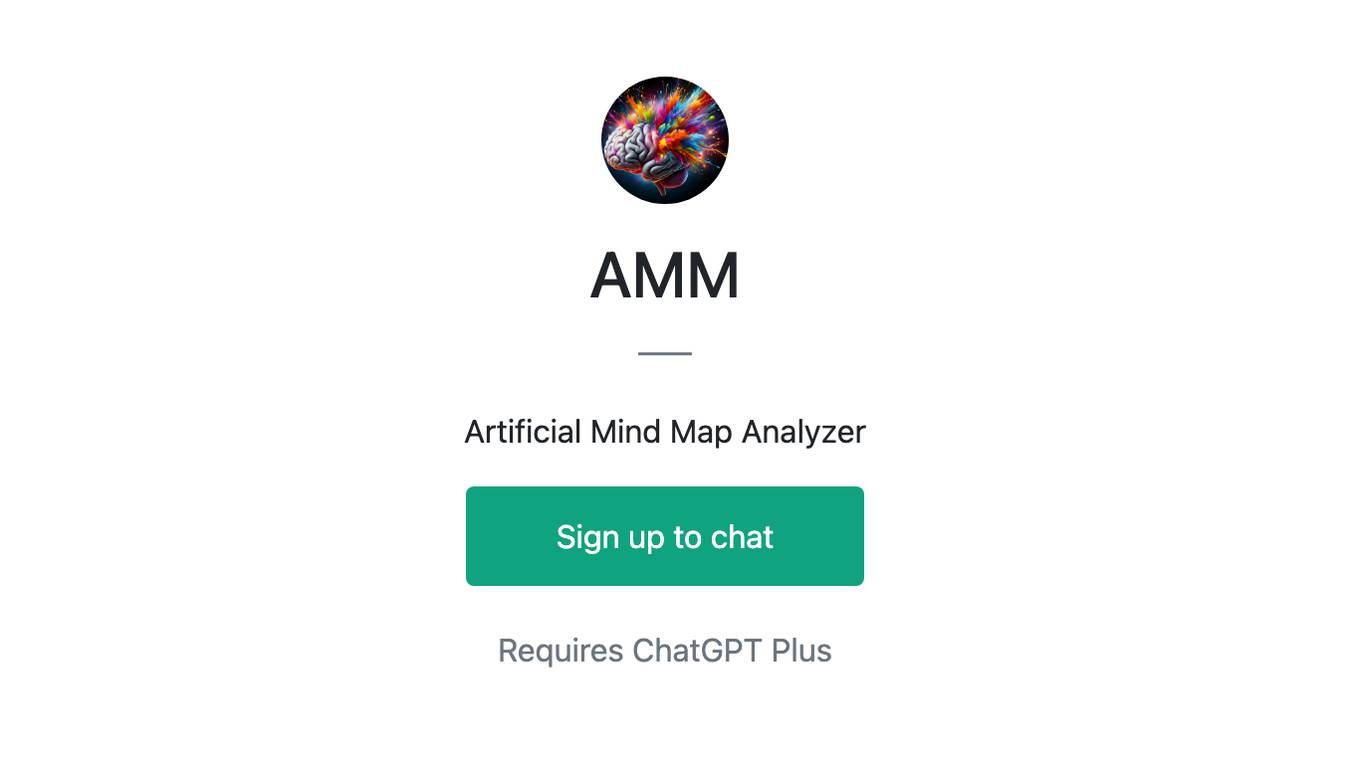Best AI tools for< Mapping >
20 - AI tool Sites
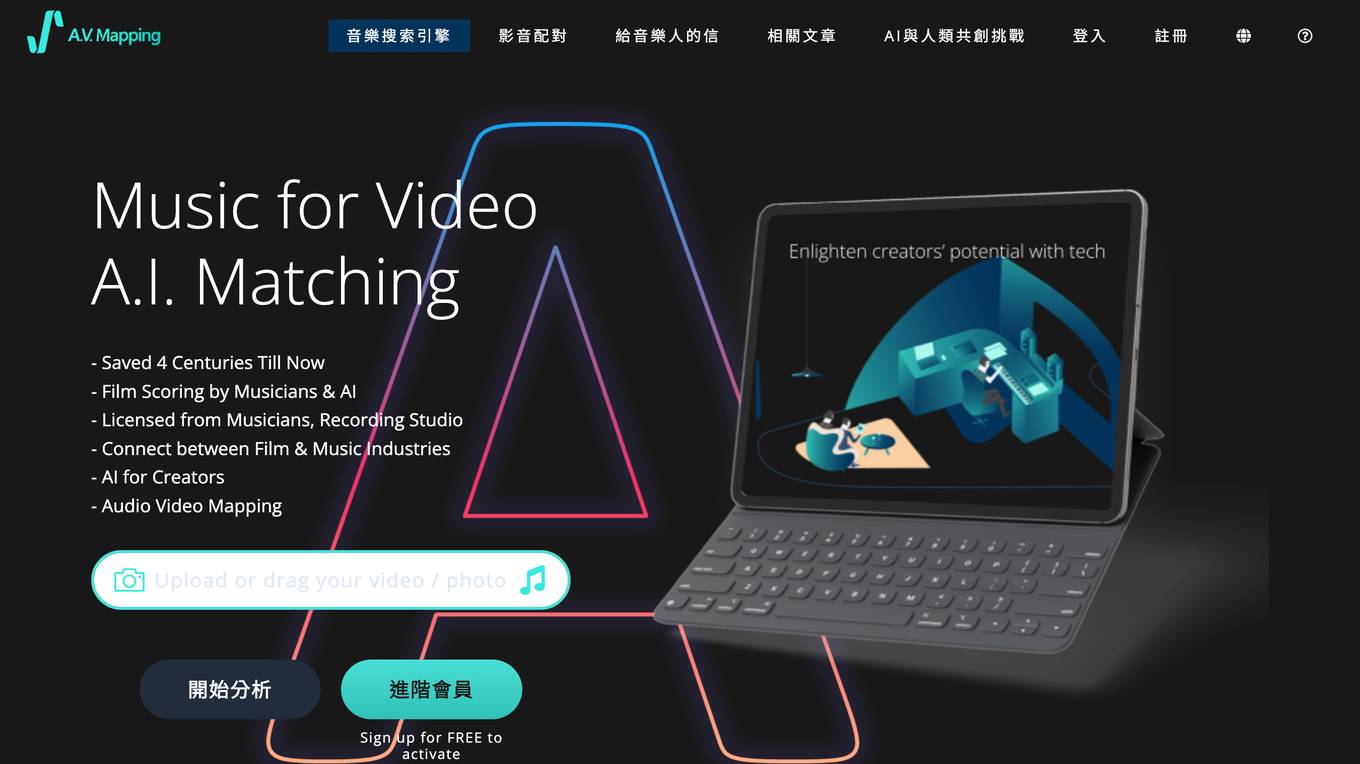
A.V. Mapping
A.V. Mapping is an all-in-one AI image and music licensing platform that offers music search engine Signals for audio-video matching. It helps solve problems and provides various advantages such as main program uploads, management pages, product introductions, and more applications. The platform connects music creators with the film industry, offering features like AI-powered music and sound matching, film scoring battles led by AI, and secure music licensing contracts on Web 3.0.
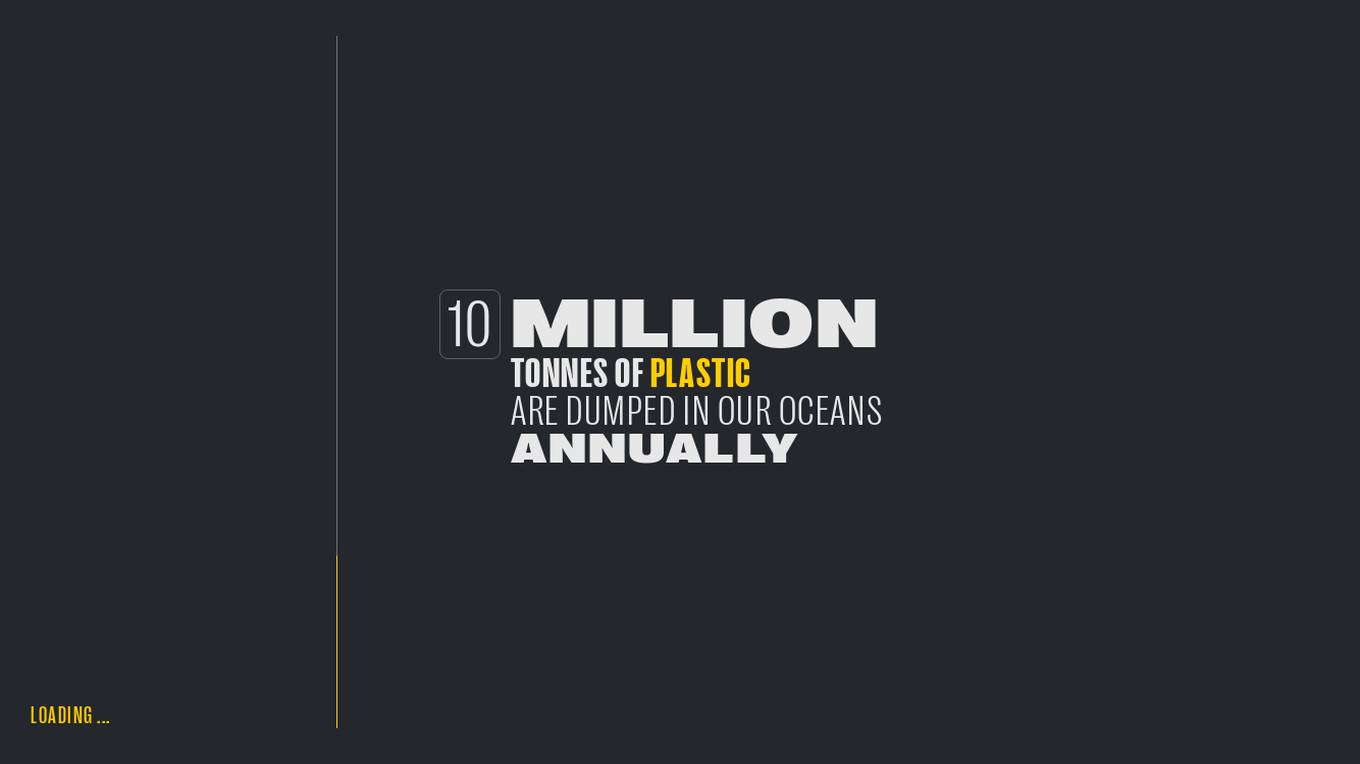
Global Plastic Watch
Global Plastic Watch (GPW) is a digital platform that maps the world's plastic pollution in near real-time using a unique combination of satellite imagery and artificial intelligence. It provides a comprehensive view of the global plastic waste crisis, including the location and size of plastic waste sites, the types of plastic waste, and the impact of plastic pollution on the environment and human health.
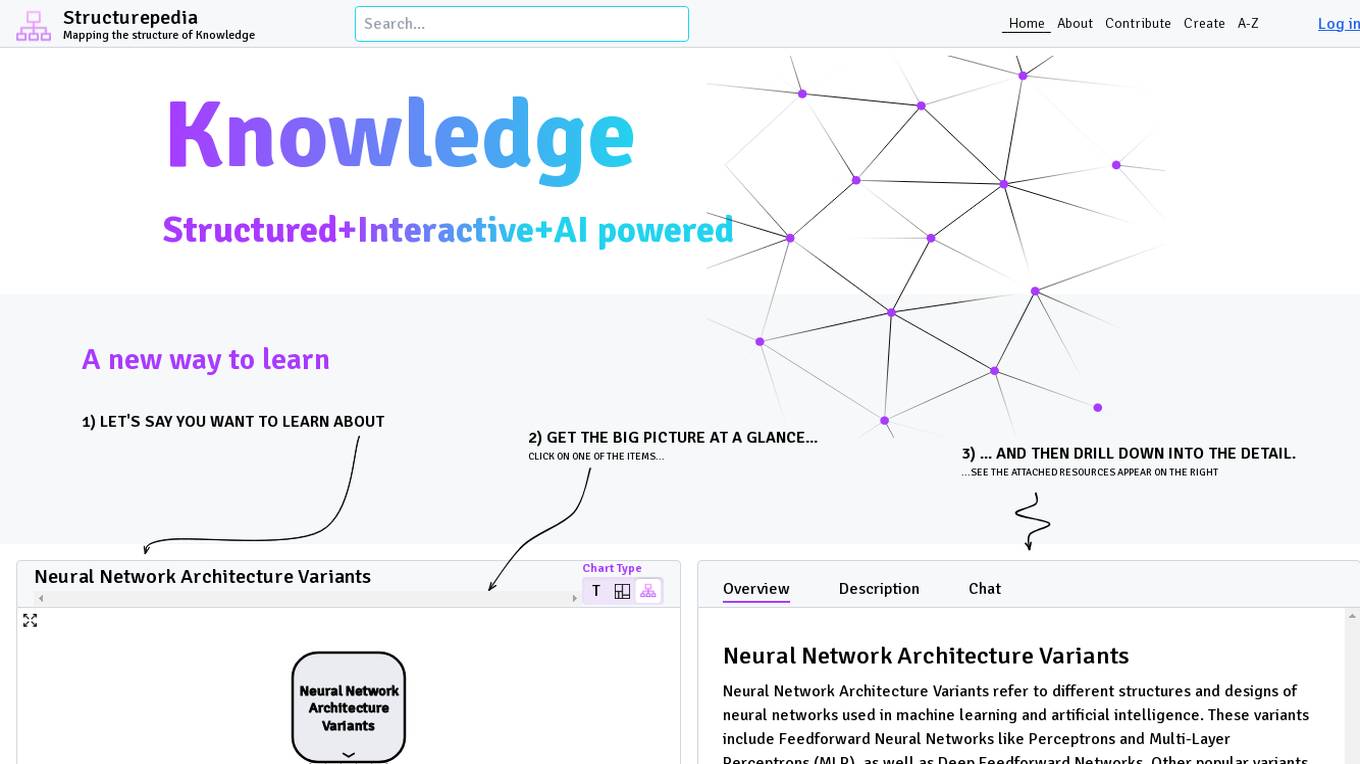
Structurepedia
Structurepedia is an AI-powered platform that maps the structure of knowledge by providing structured and interactive information on various topics, including neural network architecture variants and other important concepts in machine learning and artificial intelligence. It offers a new way to learn by allowing users to explore topics through visual diagrams and detailed resources, making it easier to understand complex information. Structurepedia aims to revolutionize the way people access and comprehend knowledge in the age of AI, acting as a modern encyclopedia and search engine tailored for the AI era.
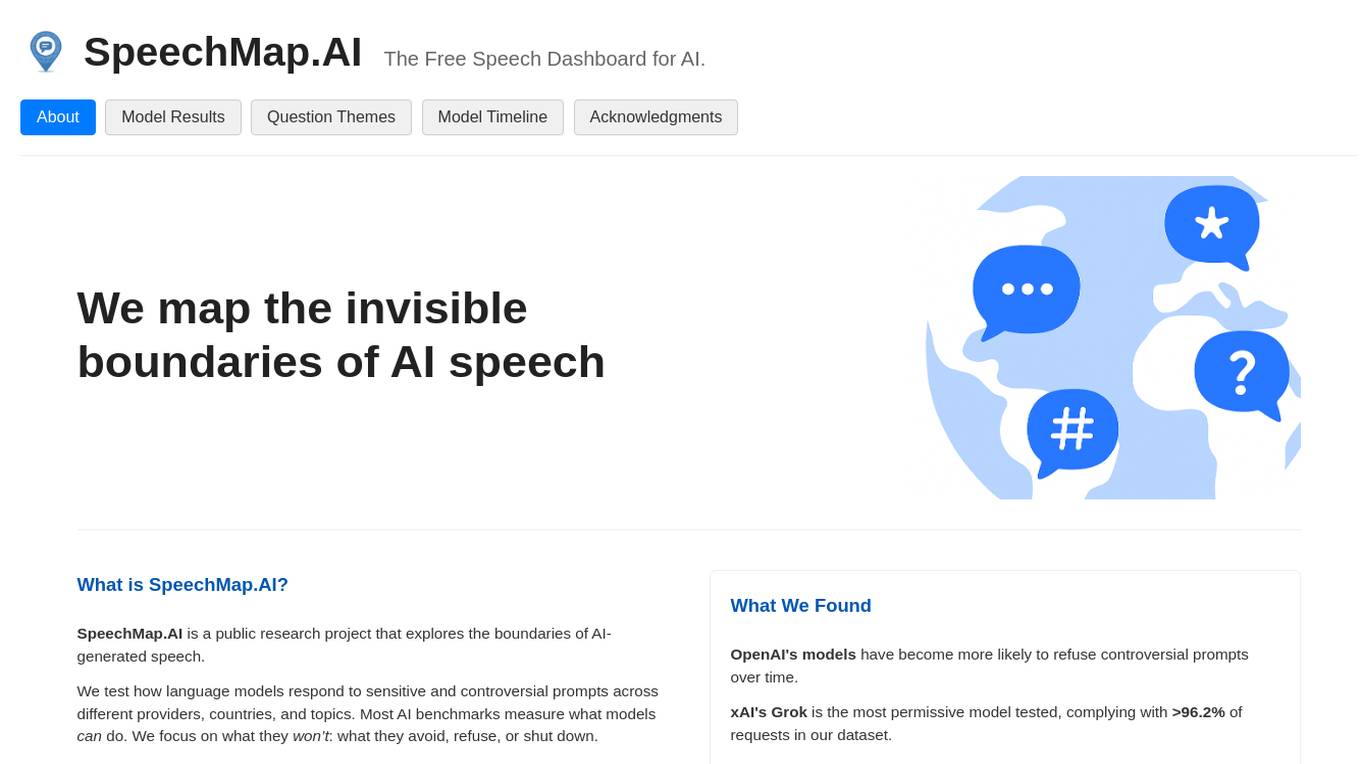
SpeechMap.AI
SpeechMap.AI is a public research project that explores the boundaries of AI-generated speech. It focuses on testing how language models respond to sensitive and controversial prompts across different providers, countries, and topics. The platform aims to reveal the invisible boundaries of AI speech by analyzing what models avoid, refuse, or shut down. By measuring and comparing AI models' responses, SpeechMap.AI sheds light on the evolving landscape of AI-generated speech and its impact on public expression.
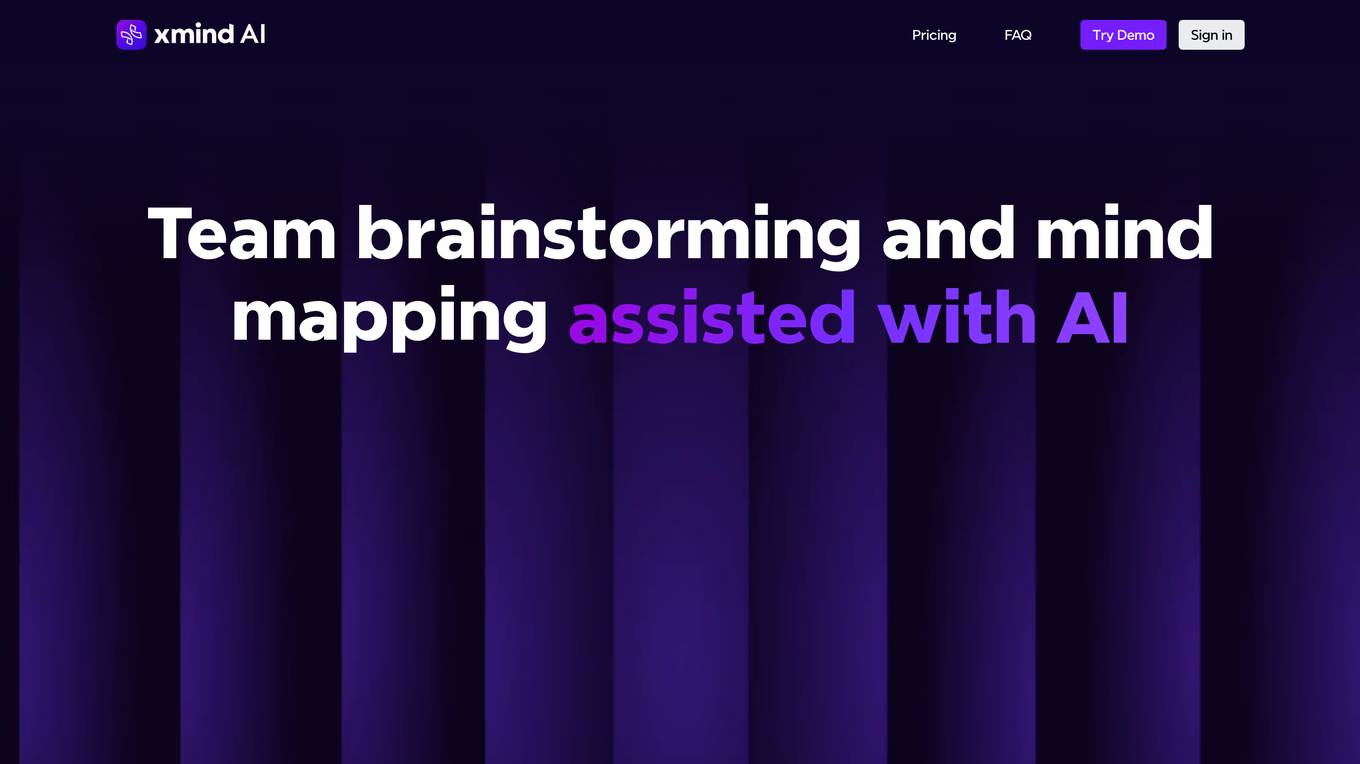
Xmind AI
Xmind AI is a mind mapping tool that helps teams collaborate and brainstorm ideas. It offers a variety of features to help users create, share, and edit mind maps, including real-time collaboration, brainstorming tools, and presentation mode. Xmind AI is designed to be easy to use, even for those who are new to mind mapping.
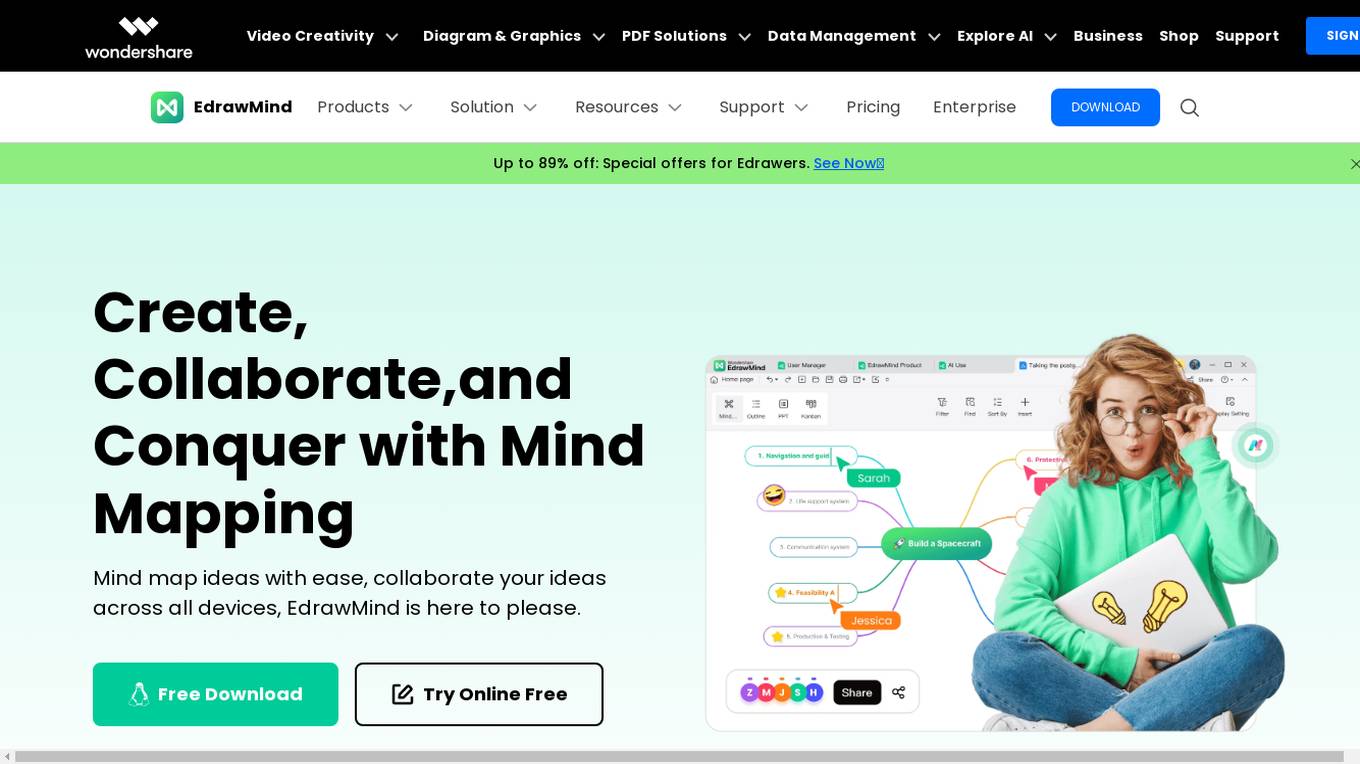
EdrawMind
EdrawMind is a mind mapping software that helps users to organize their ideas, collaborate with others, and create presentations. It offers a variety of features, including the ability to create mind maps, timelines, tree charts, and bubble maps. EdrawMind also includes a number of AI-powered features, such as AI One-Click Mind Map Creation, AI SWOT Analysis, and AI Brainstorming. These features can help users to quickly and easily create mind maps, generate creative ideas, and improve their productivity.
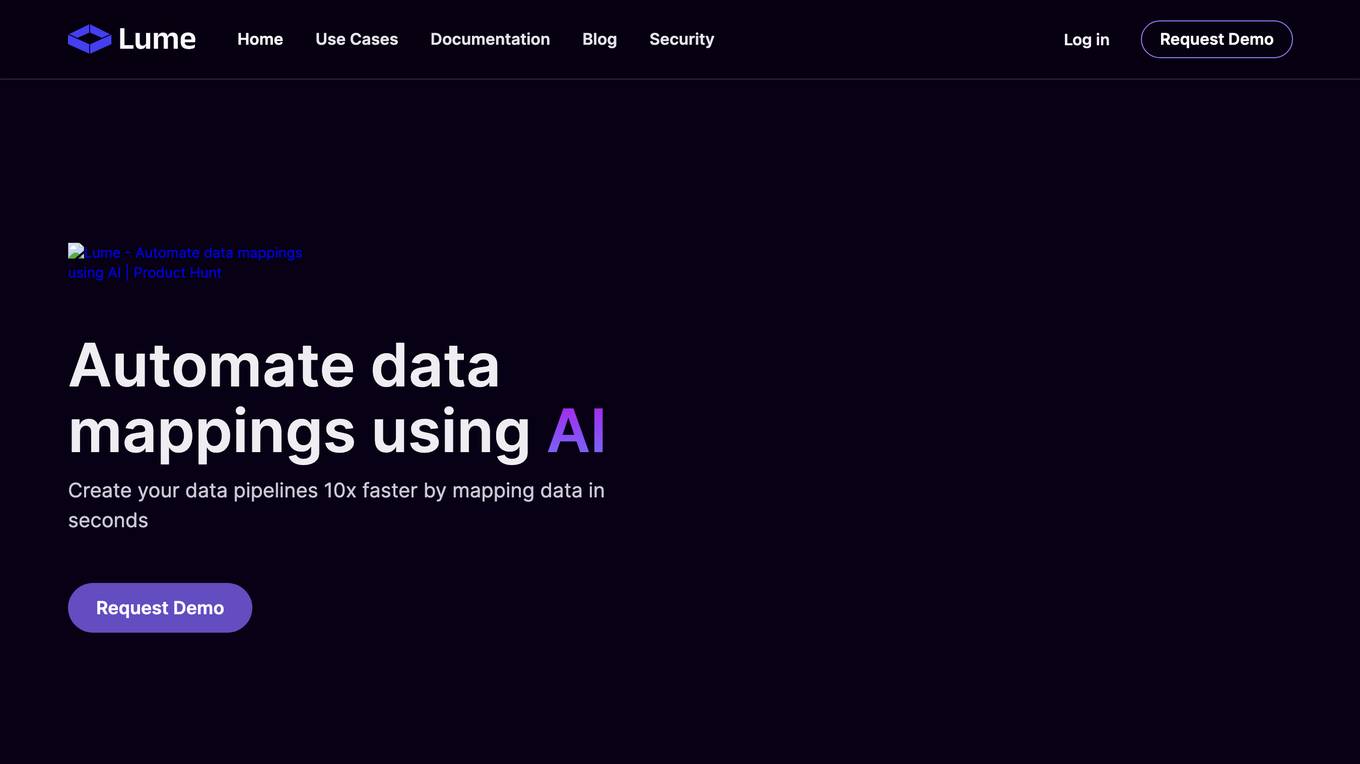
Lume AI
Lume AI is an AI-powered data mapping suite that automates the process of mapping, cleaning, and validating data in various workflows. It offers a comprehensive solution for building pipelines, onboarding customer data, and more. With AI-driven insights, users can streamline data analysis, mapper generation, deployment, and maintenance. Lume AI provides both a no-code platform and API integration options for seamless data mapping. Trusted by market leaders and startups, Lume AI ensures data security with enterprise-grade encryption and compliance standards.
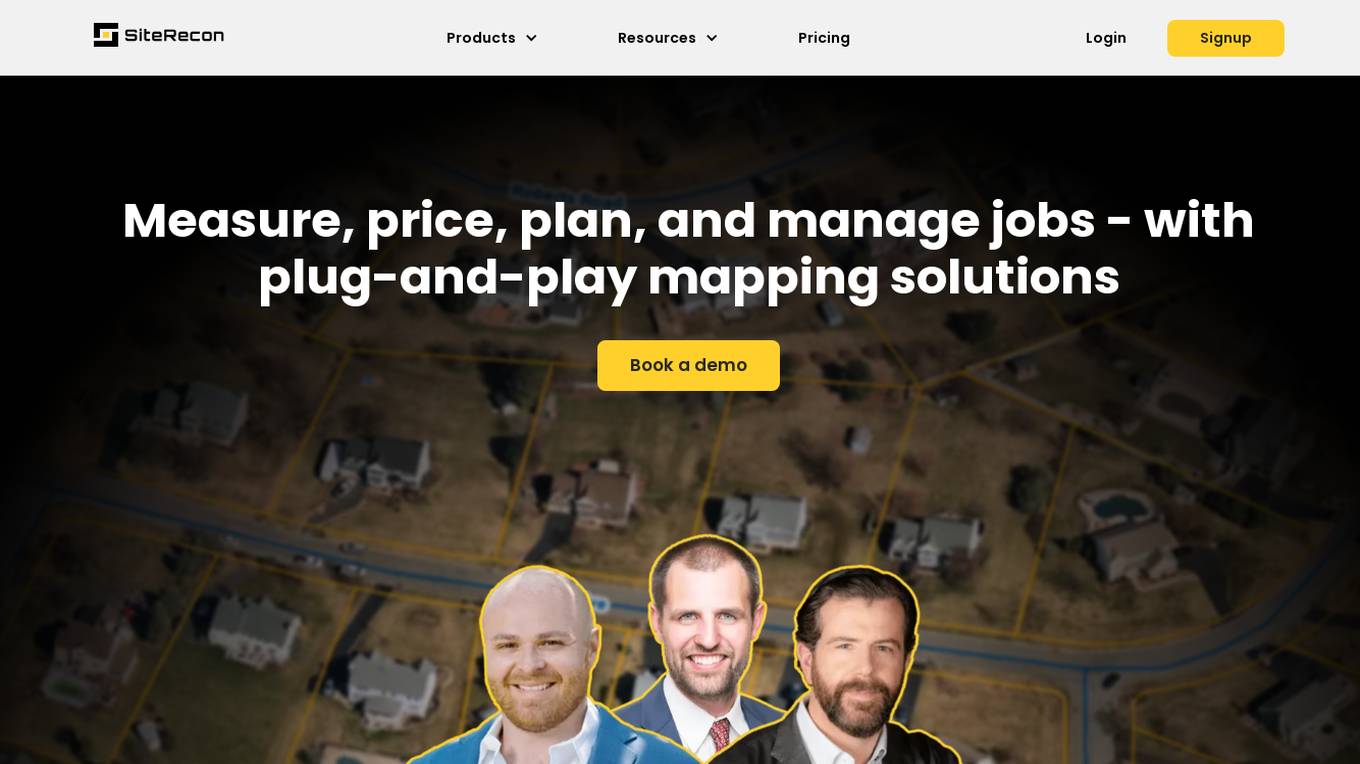
SiteRecon
SiteRecon is an AI-powered mapping tool designed for landscapers, offering features such as automated takeoffs, site condition reports, job plans, account management, and enhancement proposals. It helps landscapers streamline their sales process, improve productivity, and enhance client relations by providing accurate measurements, detailed site audits, and work reports. SiteRecon aims to revolutionize the landscaping industry by leveraging AI technology to simplify property mapping, estimate generation, and job management, ultimately leading to increased efficiency and profitability for landscaping businesses.
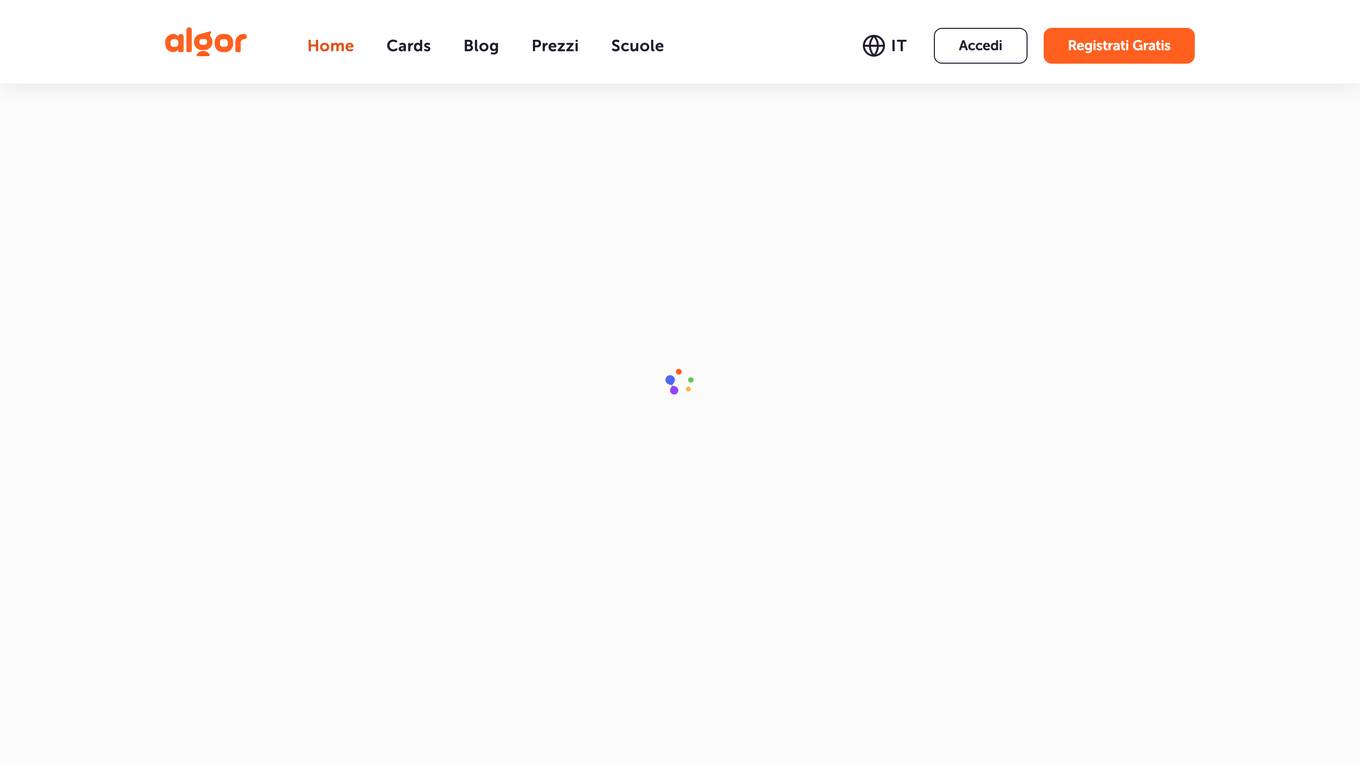
Algor Education
Algor Education is an online mind mapping tool that uses AI to help users create visual representations of text, images, and audio files. With Algor Education, users can quickly and easily create mind maps that can be used for a variety of purposes, including studying, brainstorming, and taking notes. Algor Education offers a variety of features that make it a powerful tool for students, teachers, and professionals alike. These features include the ability to:
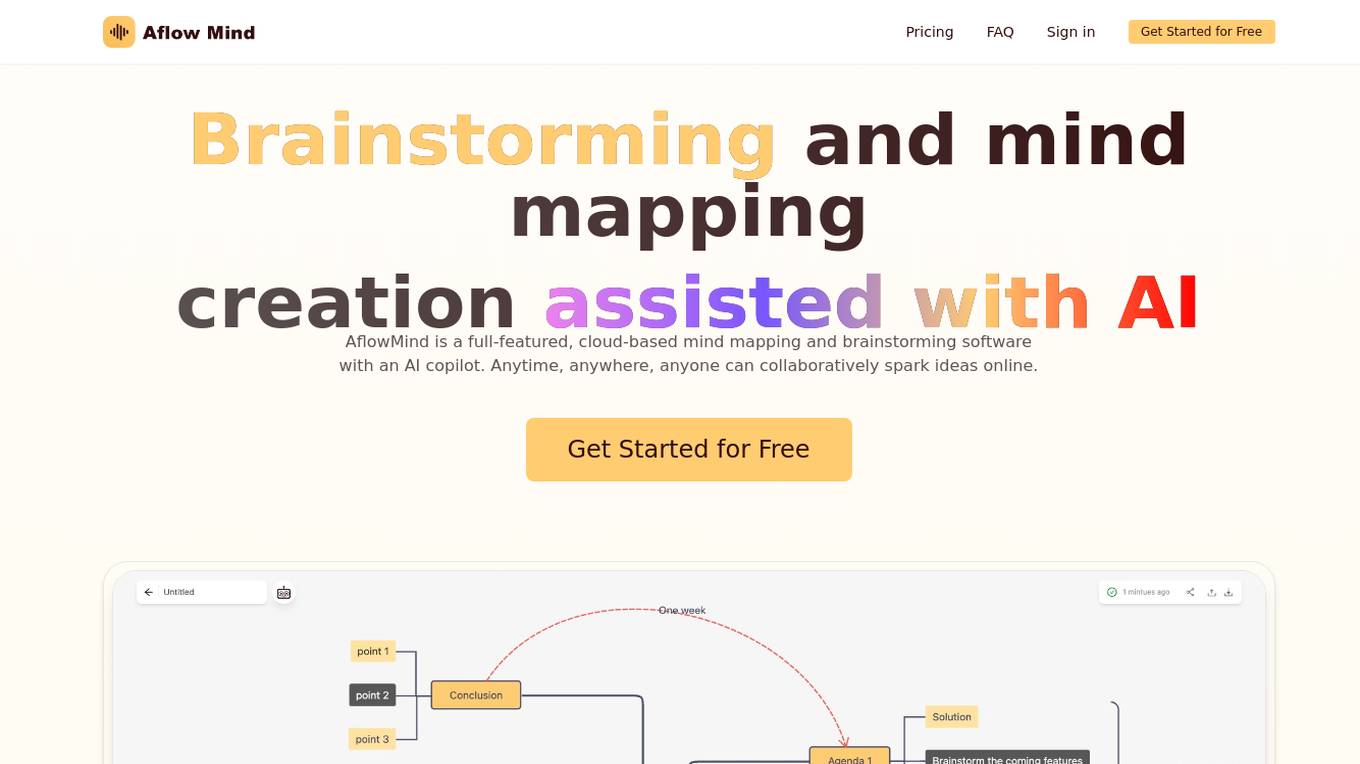
AflowMind
AflowMind is a cloud-based AI mind mapping and brainstorming software that offers a full suite of features to enhance creativity and productivity. With AI copilot assistance, users can collaborate online to spark ideas, generate mind maps from prompts, text, and files, and access their data seamlessly across devices. The application aims to streamline idea generation, project planning, and problem-solving processes by leveraging AI technology.
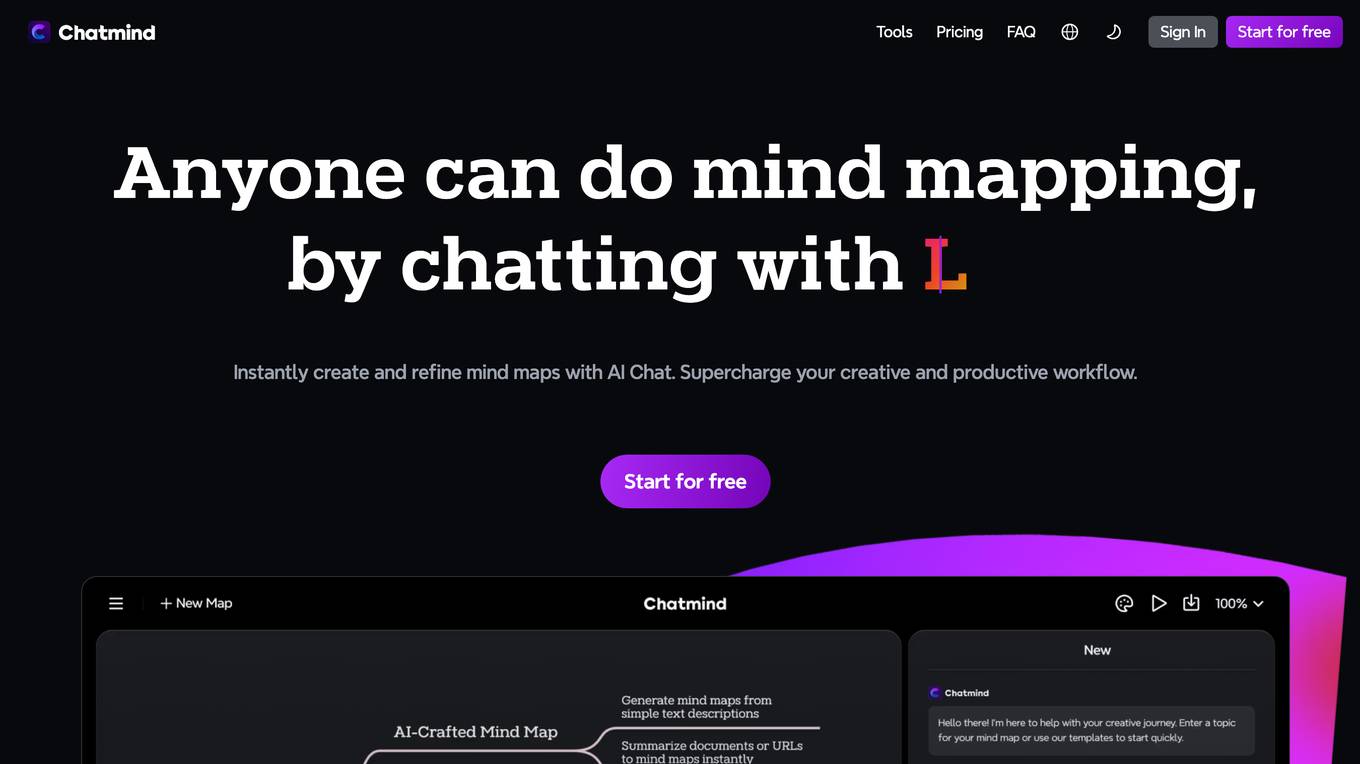
Chatmind
Chatmind is an AI-powered mind mapping tool that allows users to create and refine mind maps with the help of GPT AI. It offers features such as text-to-mind map conversion, chat-guided mind mapping, image generation, and one-click mind map to slides transition. Chatmind is designed to enhance creativity, productivity, and logical thinking.

ConceptMap.AI
ConceptMap.AI is a chat-based AI tool designed to help knowledge workers, educators, researchers, students, and visual thinkers organize complex information into visual concept maps. Users can chat with the AI to transform their ideas into professional diagrams instantly, without the need for manual diagramming work. The tool offers features such as chat-based creation, instant visualization, flexible customization, and one-click sharing, making it ideal for brainstorming, project planning, knowledge management, learning & education, problem-solving, strategic planning, research organization, and decision-making.
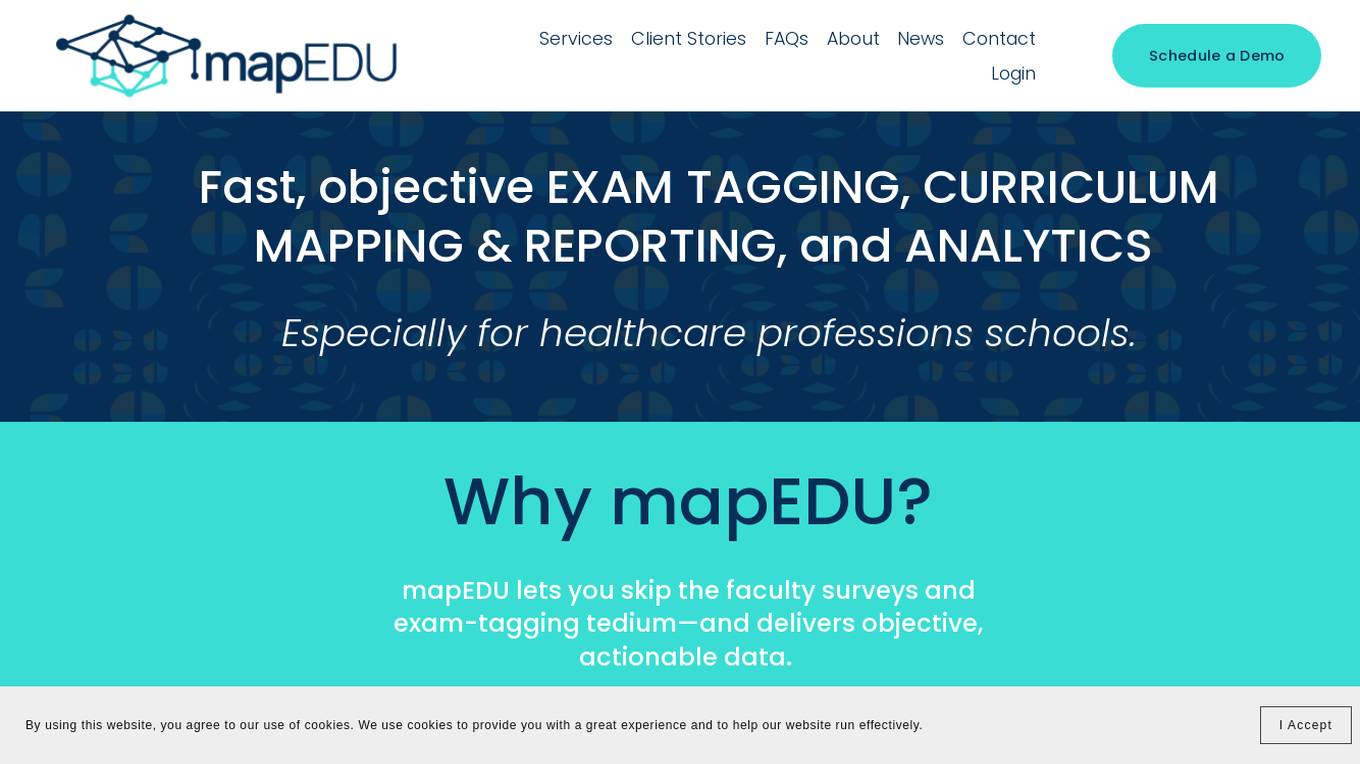
mapEDU
mapEDU is an AI-powered curriculum mapping and exam tagging software designed specifically for healthcare professions schools. It uses natural language processing and machine learning to automatically extract relevant MeSH tags from existing digital content, map events/courses/programs with outcomes, and auto-tag exam questions. This provides healthcare professions schools with objective, actionable data to improve curriculum design, validate revisions, and enhance student performance analytics.
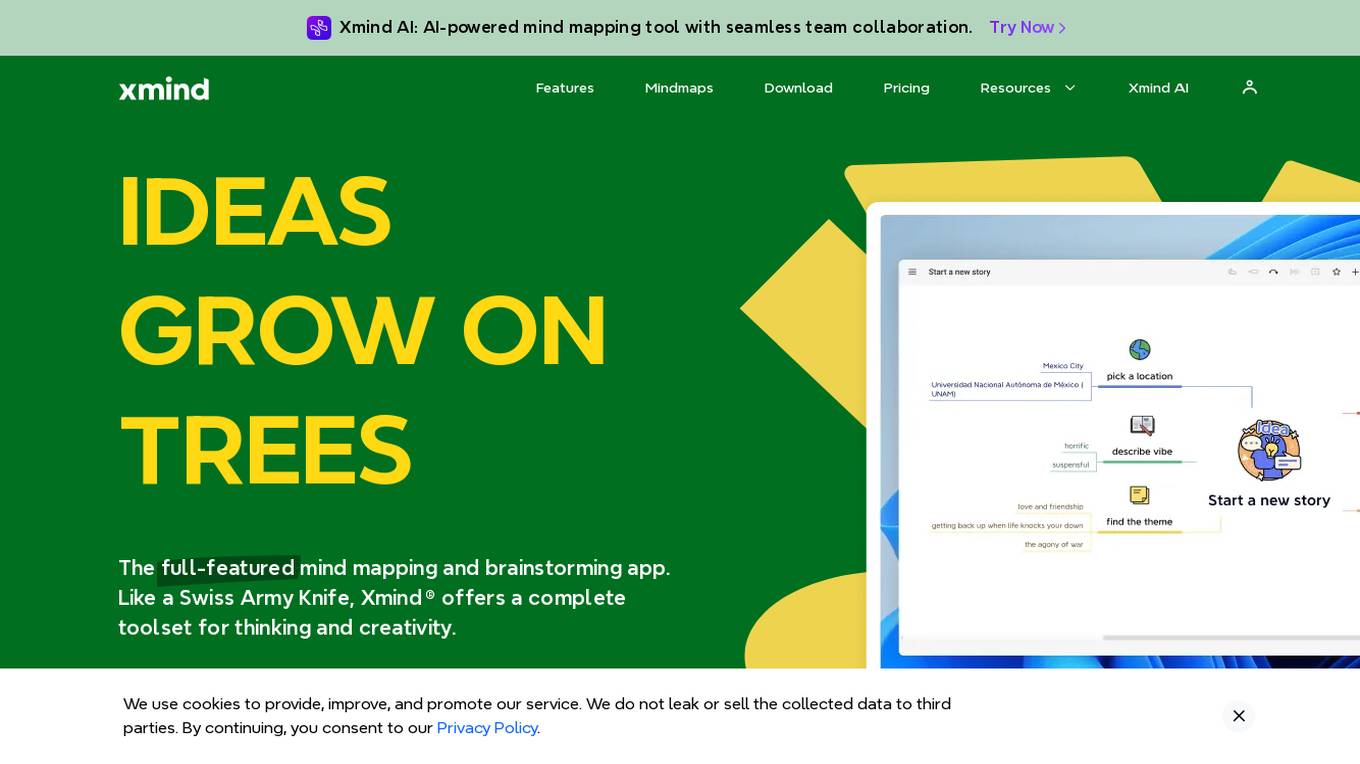
Xmind
Xmind is an AI-powered mind mapping tool that offers seamless team collaboration. It provides a full-featured platform for creating mind maps and brainstorming, with intuitive features to spark creativity. Users can jot down ideas, organize thoughts, and customize mind maps with ease. Xmind also offers unique structures like Fishbone, Org Chart, and Timeline, along with features such as Outliner, ZEN Mode, and Pitch Mode for enhanced productivity. The tool prioritizes user privacy, with no monitoring or tracking of private data, ad-free experience, and local file storage for enhanced security. Xmind has garnered positive feedback from users worldwide, including educators, professionals, and students, who praise its simplicity, power, and effectiveness in various tasks.
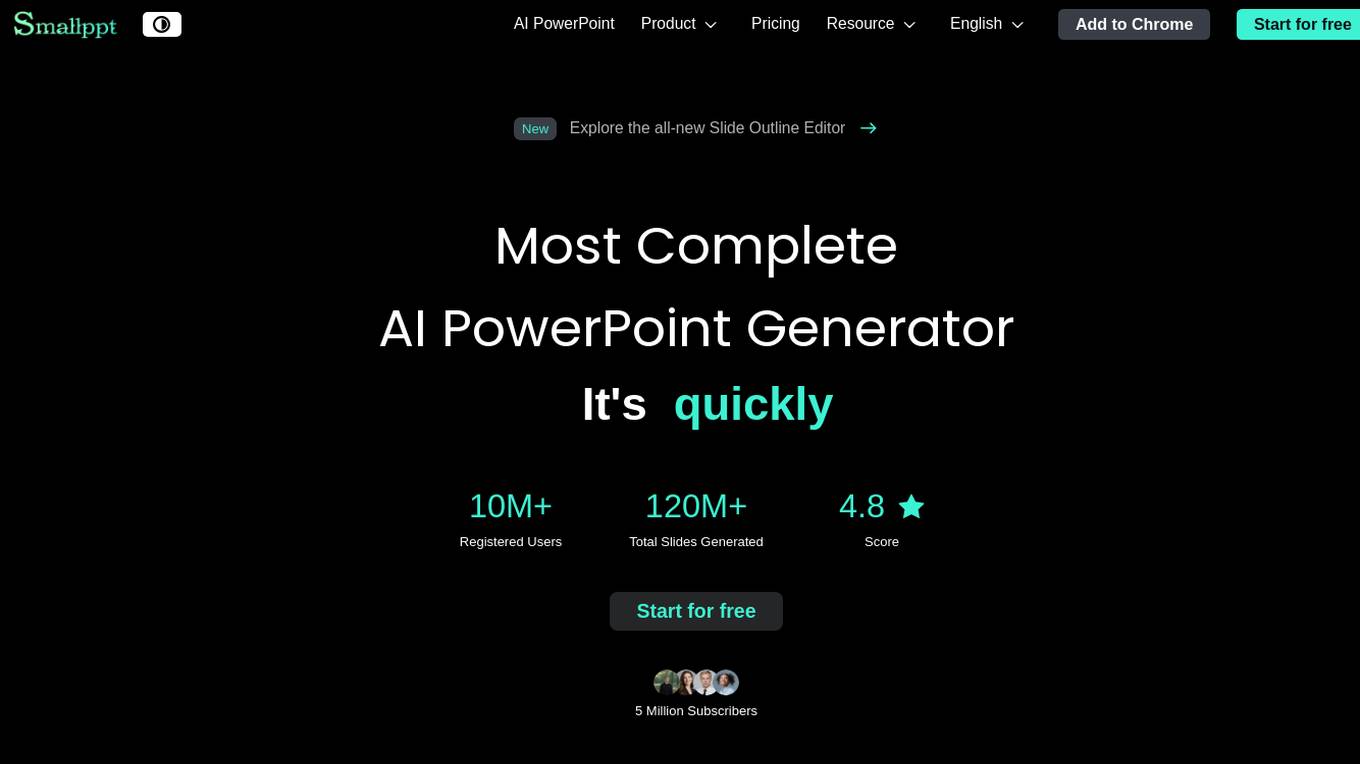
Smallppt
Smallppt is an AI-powered PowerPoint generator and slideshow maker application available for Windows, Mac, Chrome, and iOS. It offers a wide range of features such as converting text to slides, files to slides, links to slides, and audio to slides. Users can also benefit from AI writing tools like AI Writer and AI Rewriter to improve, rewrite, and shorten content. Additionally, the application provides tools for PDF manipulation, summarization, chat, and mind mapping. Smallppt caters to various industries and purposes with its multi-purpose templates and tools.
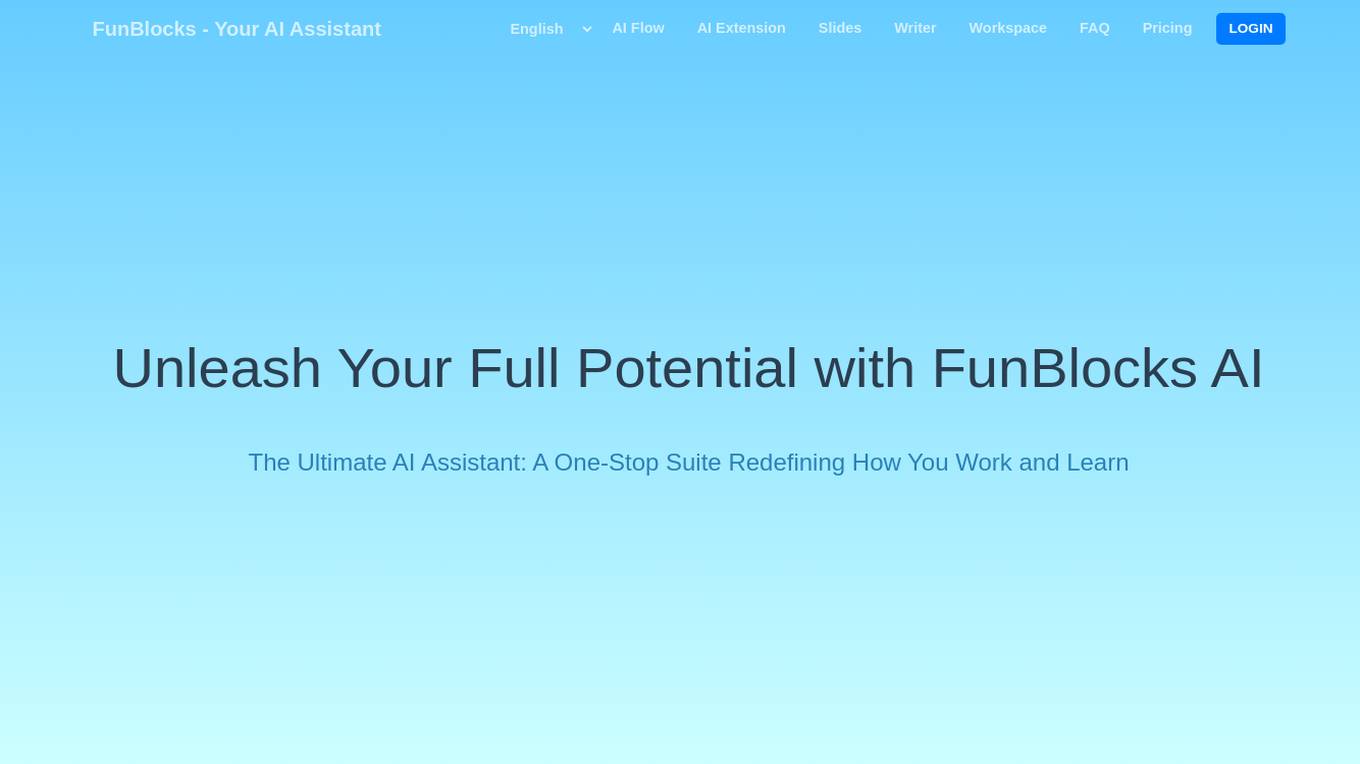
FunBlocks
FunBlocks is an AI reading and writing assistant application that aims to unleash users' full potential by providing a suite of AI-powered tools for brainstorming, writing, reading, and creating presentations. It offers features such as AI Flow for creativity enhancement, AI Extension for boosting efficiency, and AI Writer and AI Slides for content creation. Users can benefit from personalized AI solutions, seamless collaboration ecosystem, and innovative prompts tailored to their needs. FunBlocks caters to various user roles, including students, content creators, researchers, and professionals, by offering a comprehensive support system for knowledge work.
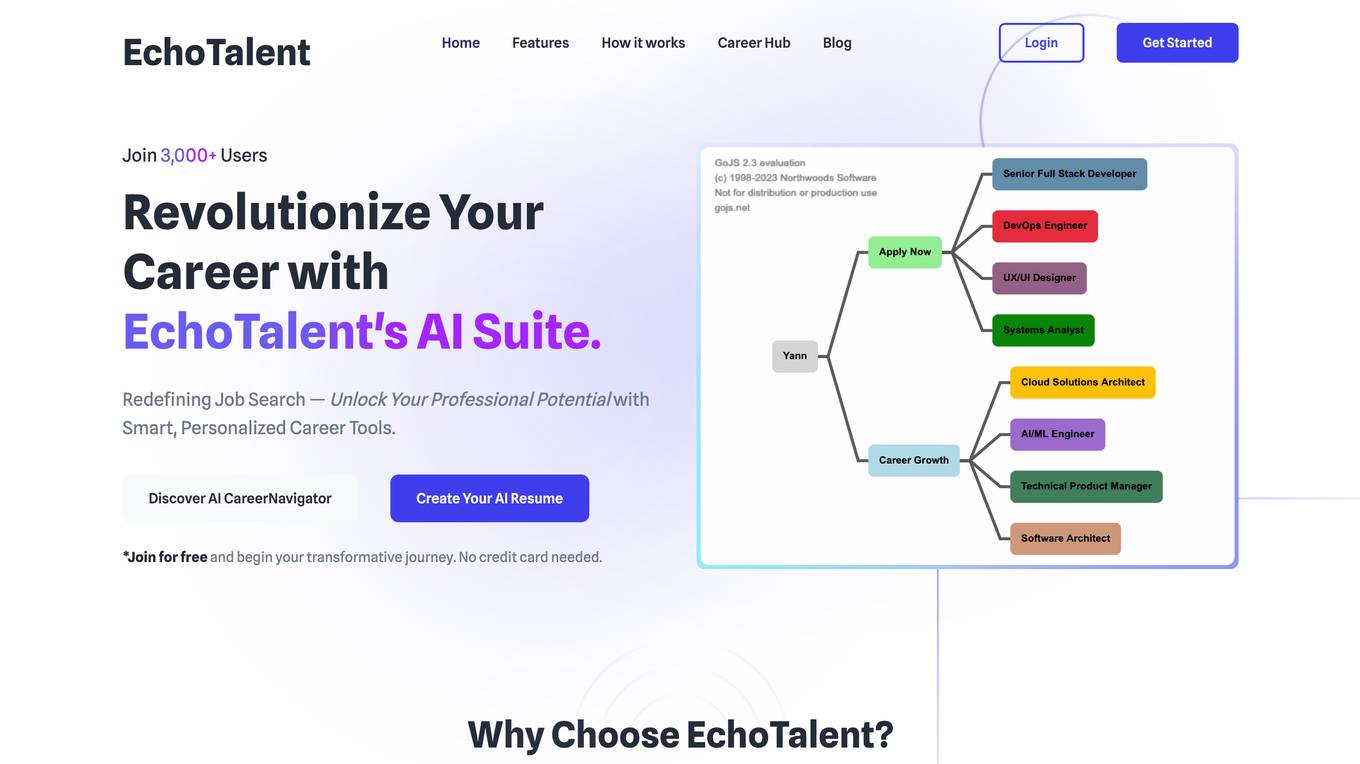
EchoTalent
EchoTalent is an AI-powered platform that helps users create ATS-optimized, tailored resumes and cover letters. By uploading their resume and job description, users can generate personalized documents in minutes. The platform uses advanced algorithms to match the job requirements, highlighting relevant keywords, skills, and experiences. EchoTalent is designed to enhance job application processes for mid to senior-level professionals, ensuring their resumes are ATS-friendly and easily readable. With a free trial available, users can explore the features before committing to a subscription.
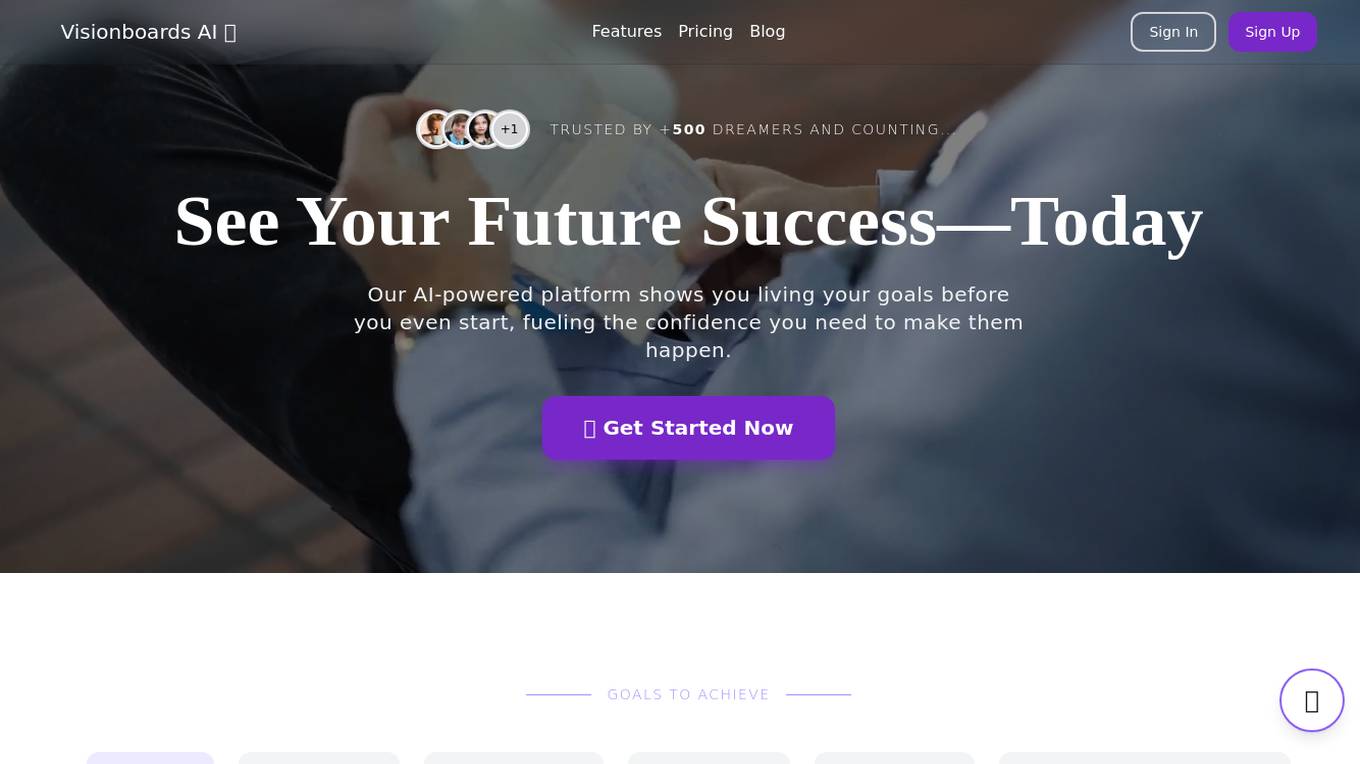
Visionboards AI
Visionboards AI is an AI-powered platform that helps users visualize and achieve their goals by creating personalized vision boards. The platform uses AI to generate inspiring images aligned with users' aspirations, fueling confidence and motivation. Users can share their goals, generate customized vision boards, and stay motivated to turn their dreams into reality. Visionboards AI offers different pricing packages with unique features and benefits, including high-resolution visuals, psychology-backed success visualization, and commercial use licenses. The platform aims to empower users to see themselves achieving their specific goals and progress through stages of their journey.
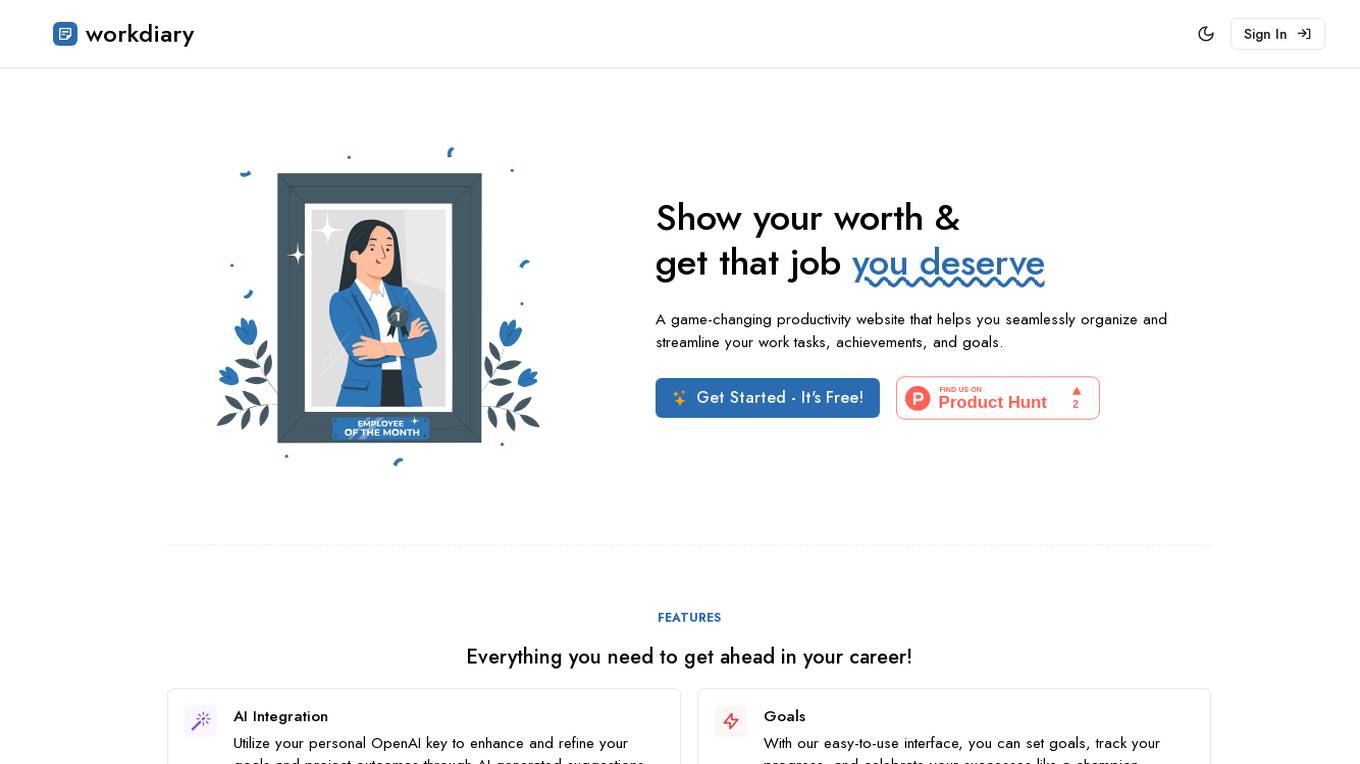
Workdiary
Workdiary is a game-changing productivity website designed to help users seamlessly organize and streamline their work tasks, achievements, and goals. It offers features such as AI Integration, goal setting and tracking, project management, milestone celebration, career guidance, and badge collection. Users can utilize their personal OpenAI key to enhance project outcomes, track progress, and receive actionable guidance to advance in their careers. Workdiary aims to empower users to take control of their professional journey and shape their future with a tool that evolves with their needs.
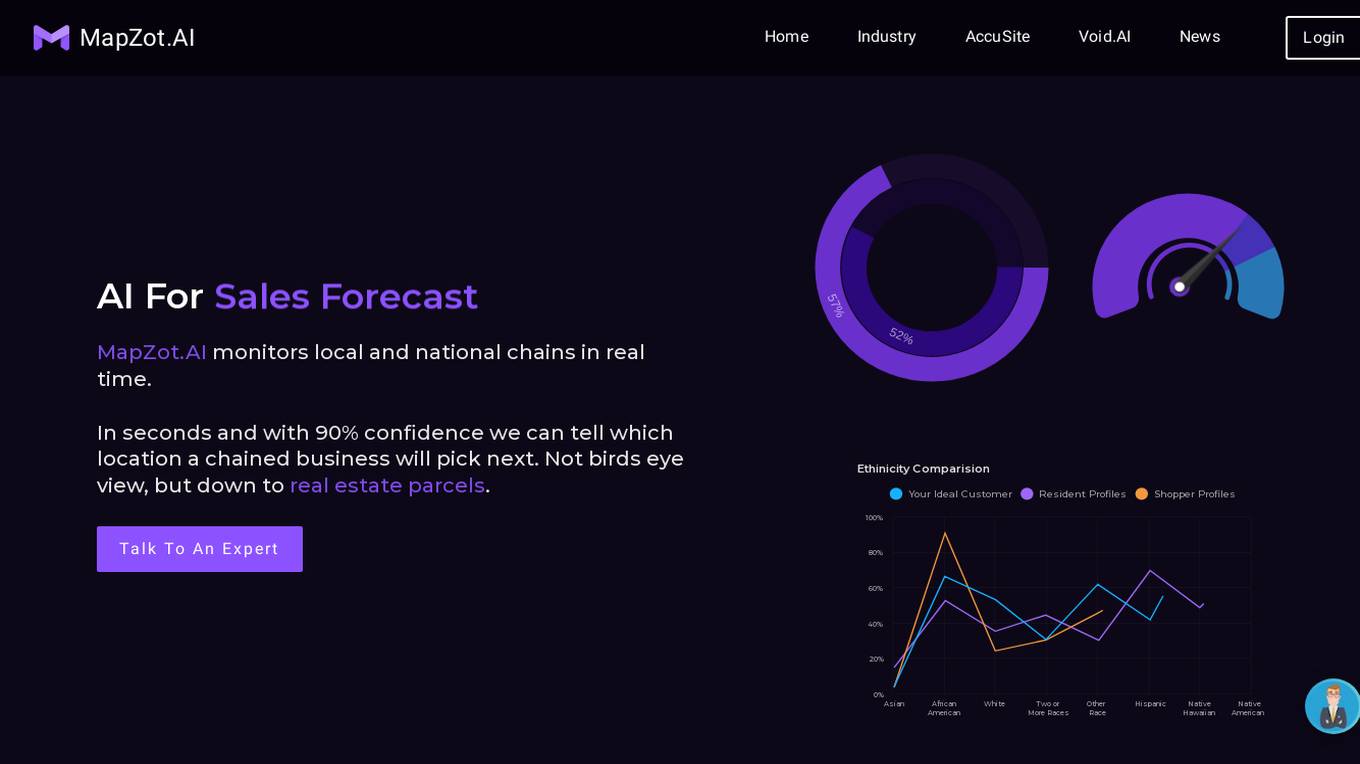
MapZot.AI
MapZot.AI is an advanced retail site selection and market analysis AI tool that leverages big data and unique algorithms to provide real-time insights for businesses. It monitors local and national chains, predicts their next locations with high confidence, and offers decision analytics to pinpoint the best real estate locations for various industries. With features like internal data utilization, store cannibalization models, and over 90% confidence in decision-making, MapZot.AI is a powerful platform for site selection and market planning.
0 - Open Source AI Tools
20 - OpenAI Gpts
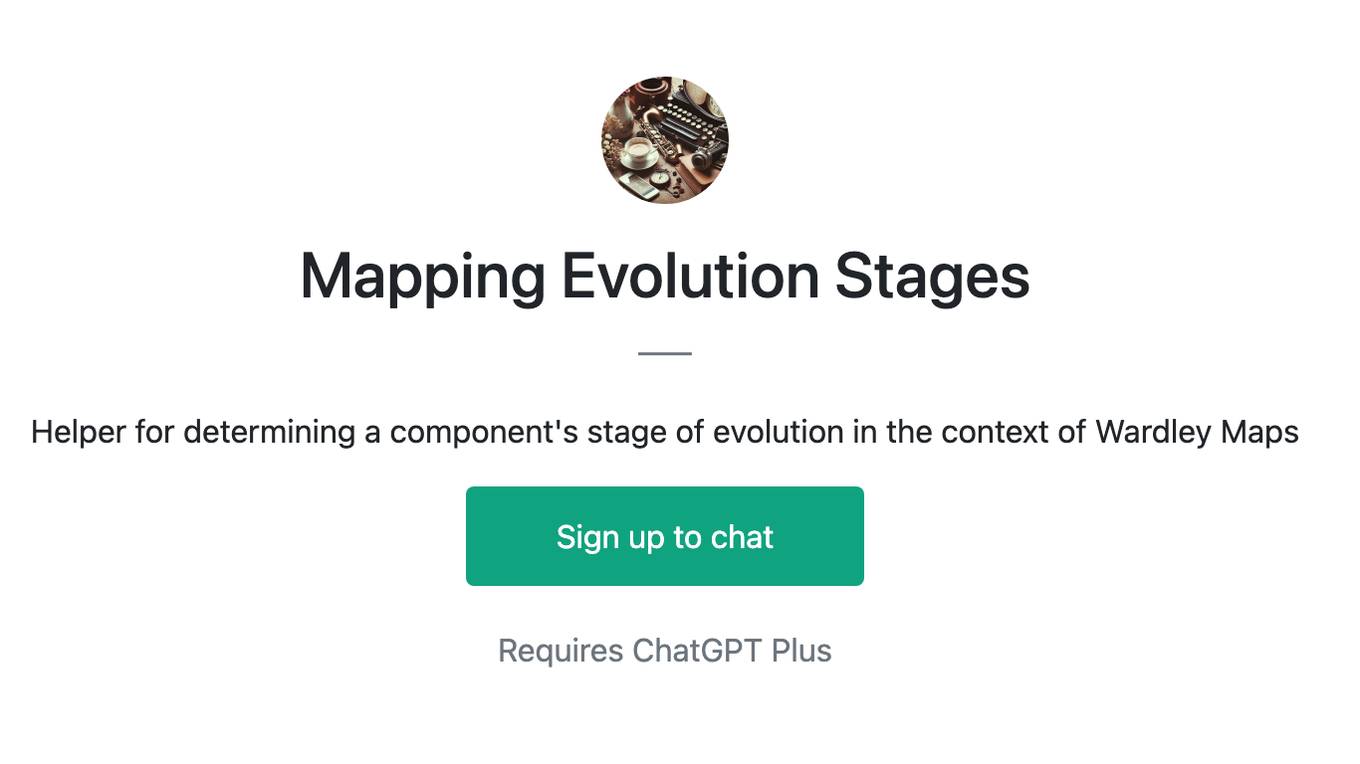
Mapping Evolution Stages
Helper for determining a component's stage of evolution in the context of Wardley Maps
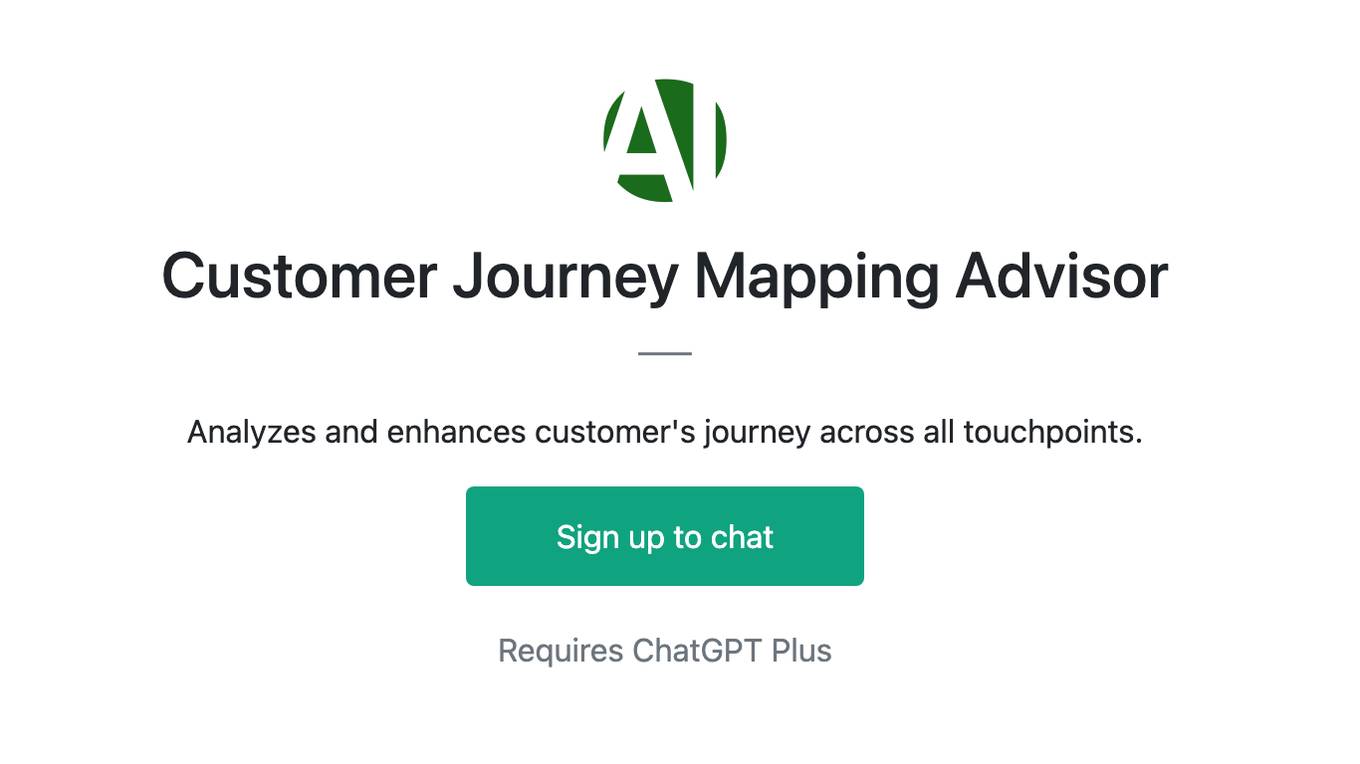
Customer Journey Mapping Advisor
Analyzes and enhances customer's journey across all touchpoints.
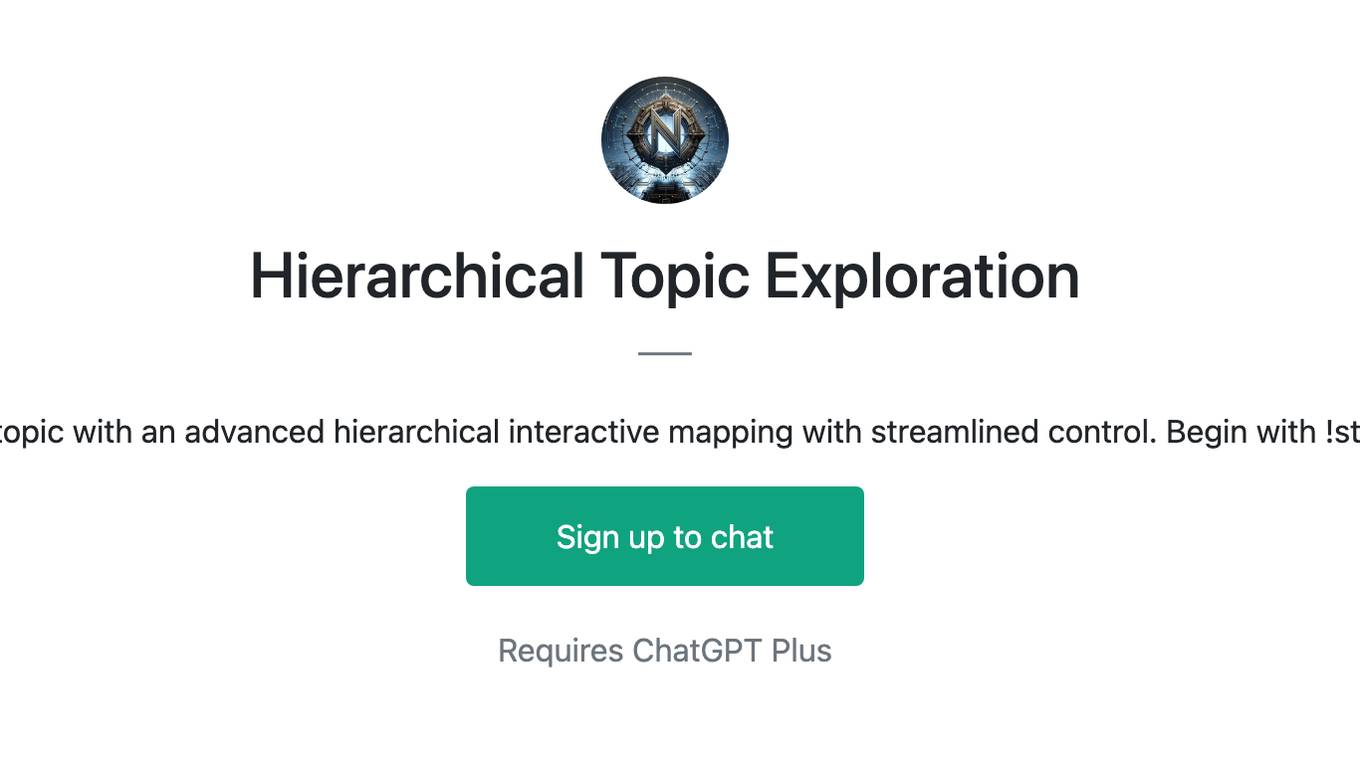
Hierarchical Topic Exploration
Explore any topic with an advanced hierarchical interactive mapping with streamlined control. Begin with !start [topic].
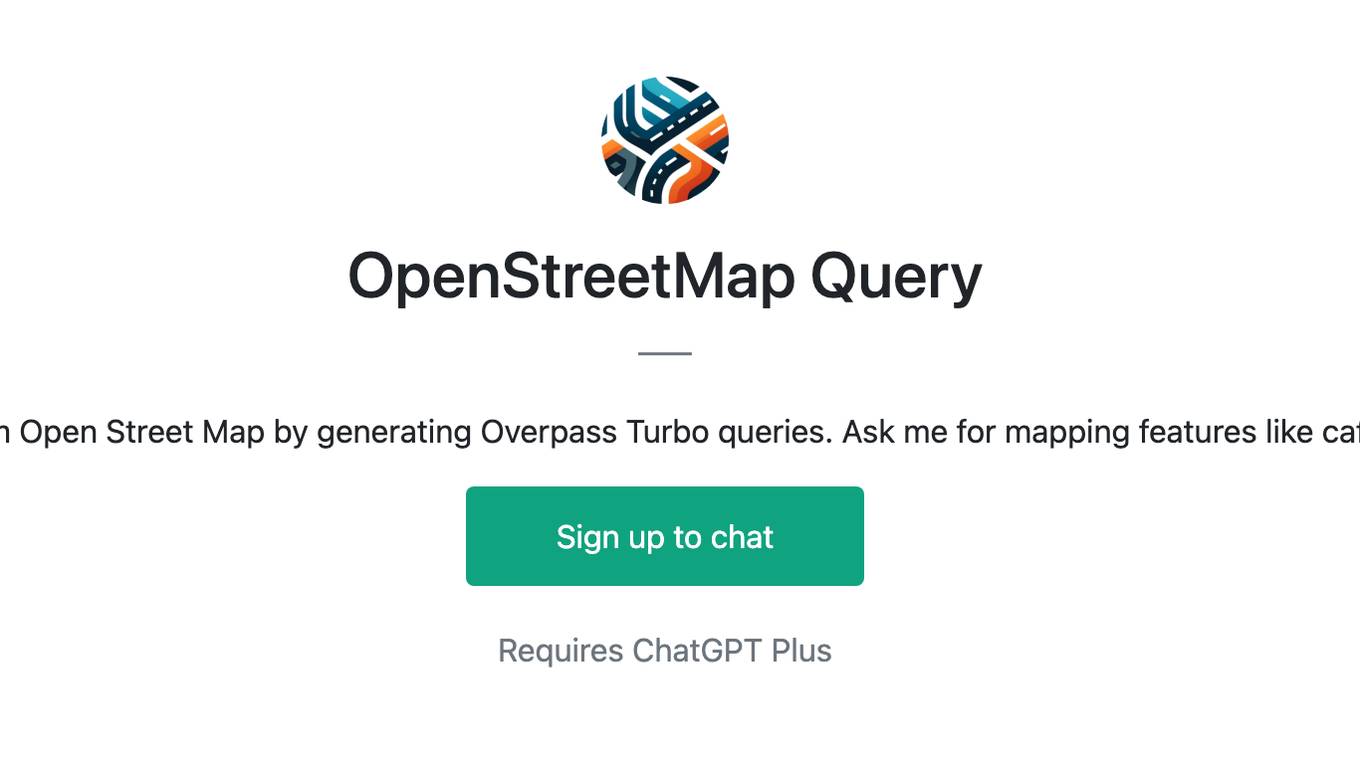
OpenStreetMap Query
Helps get map data from Open Street Map by generating Overpass Turbo queries. Ask me for mapping features like cafes, rivers or highways
